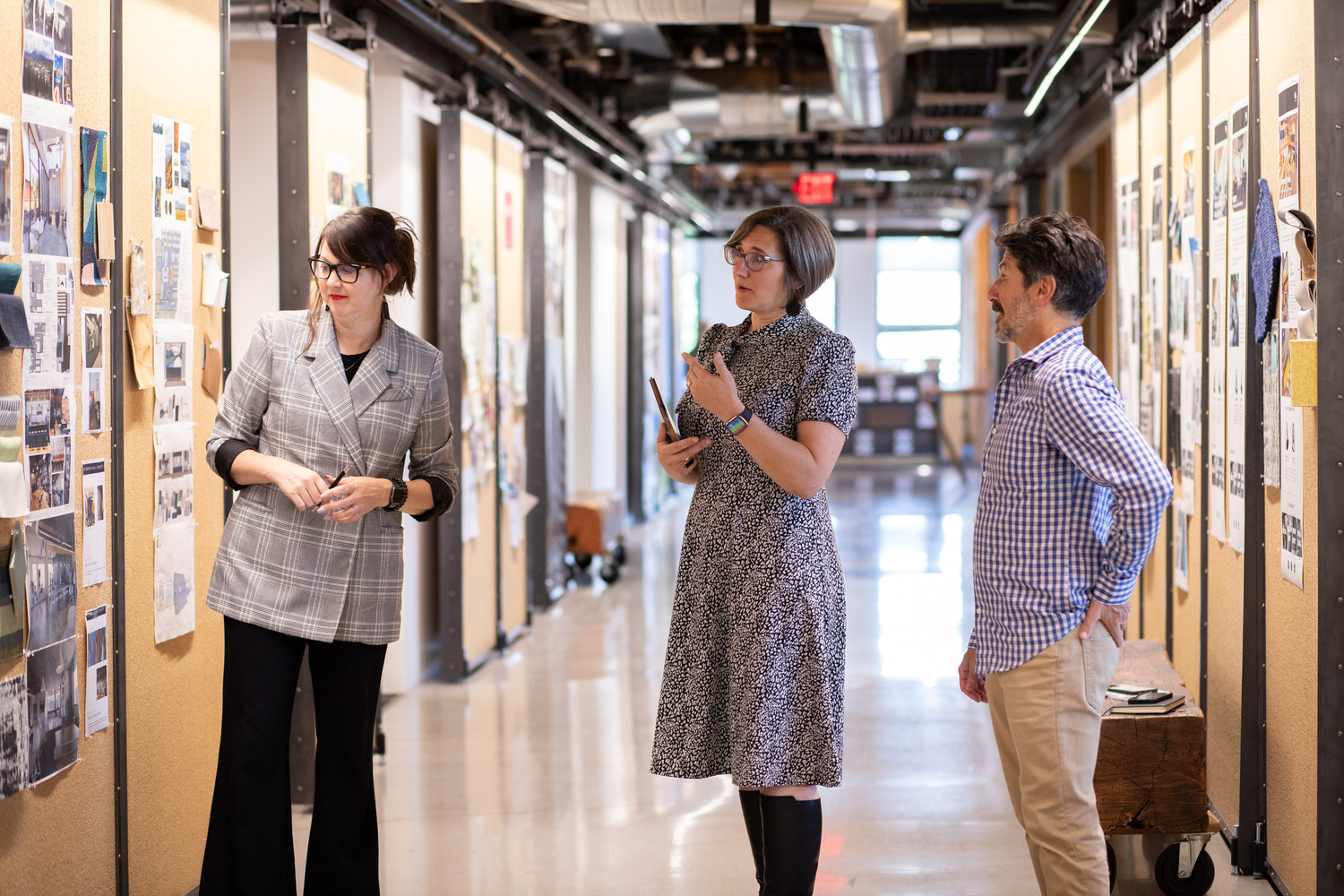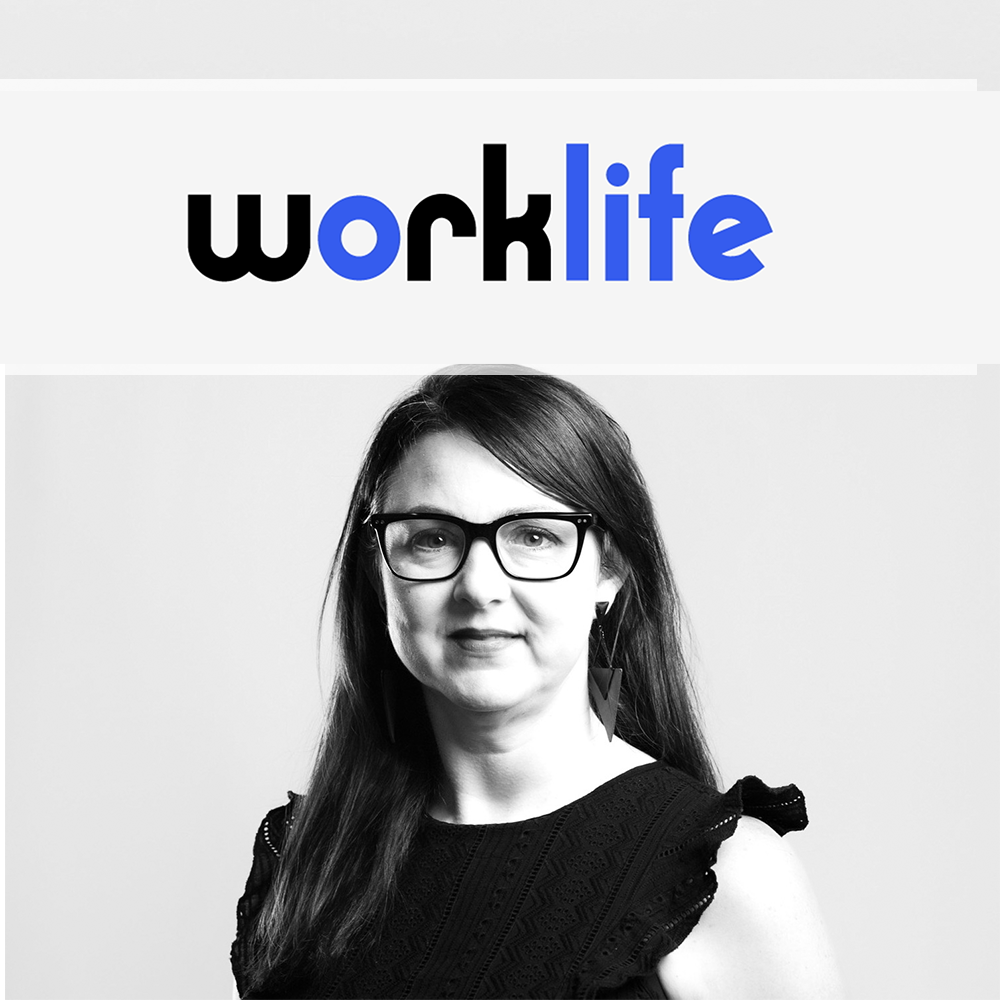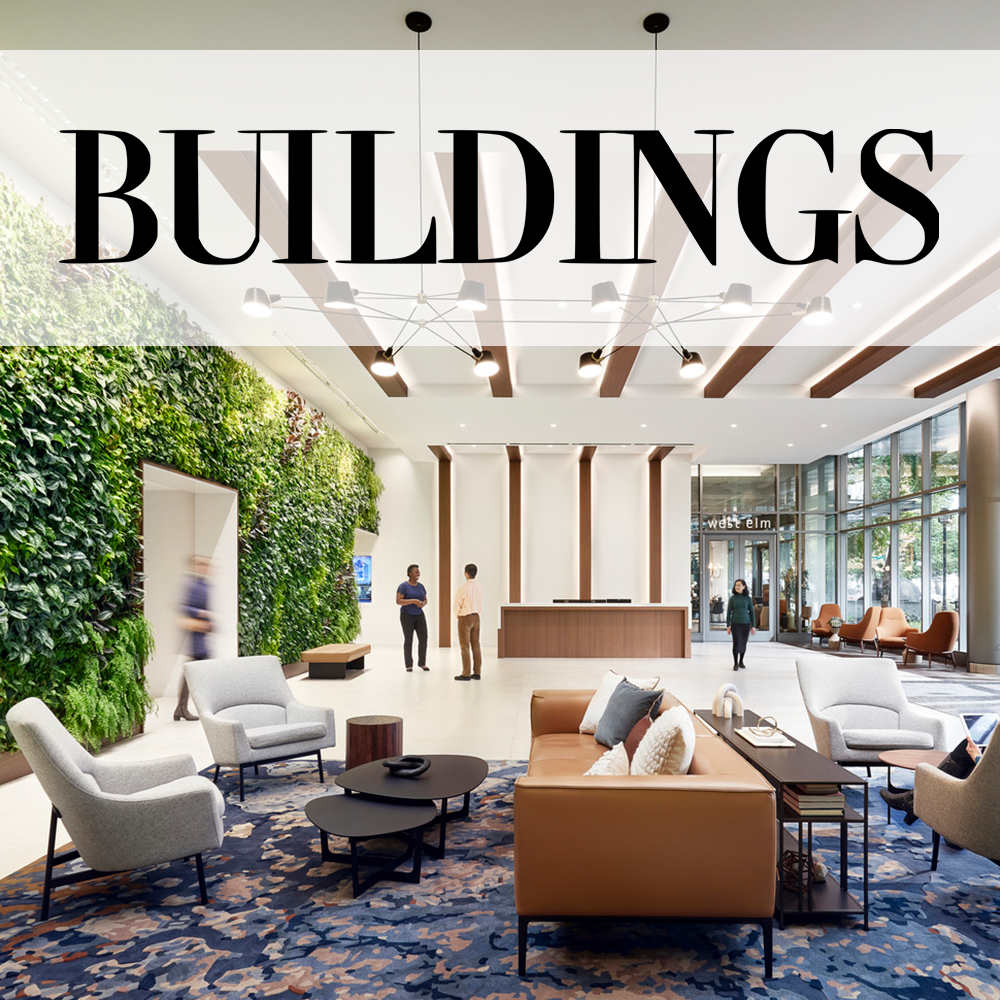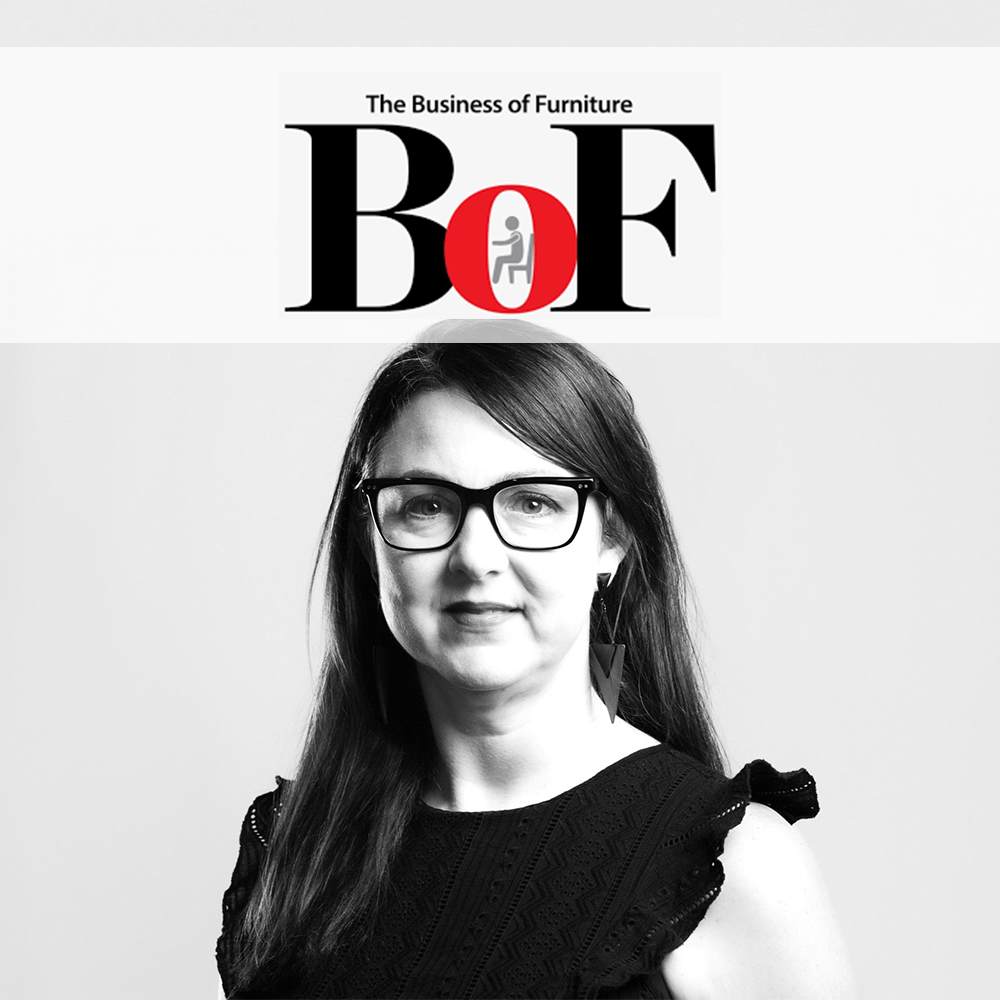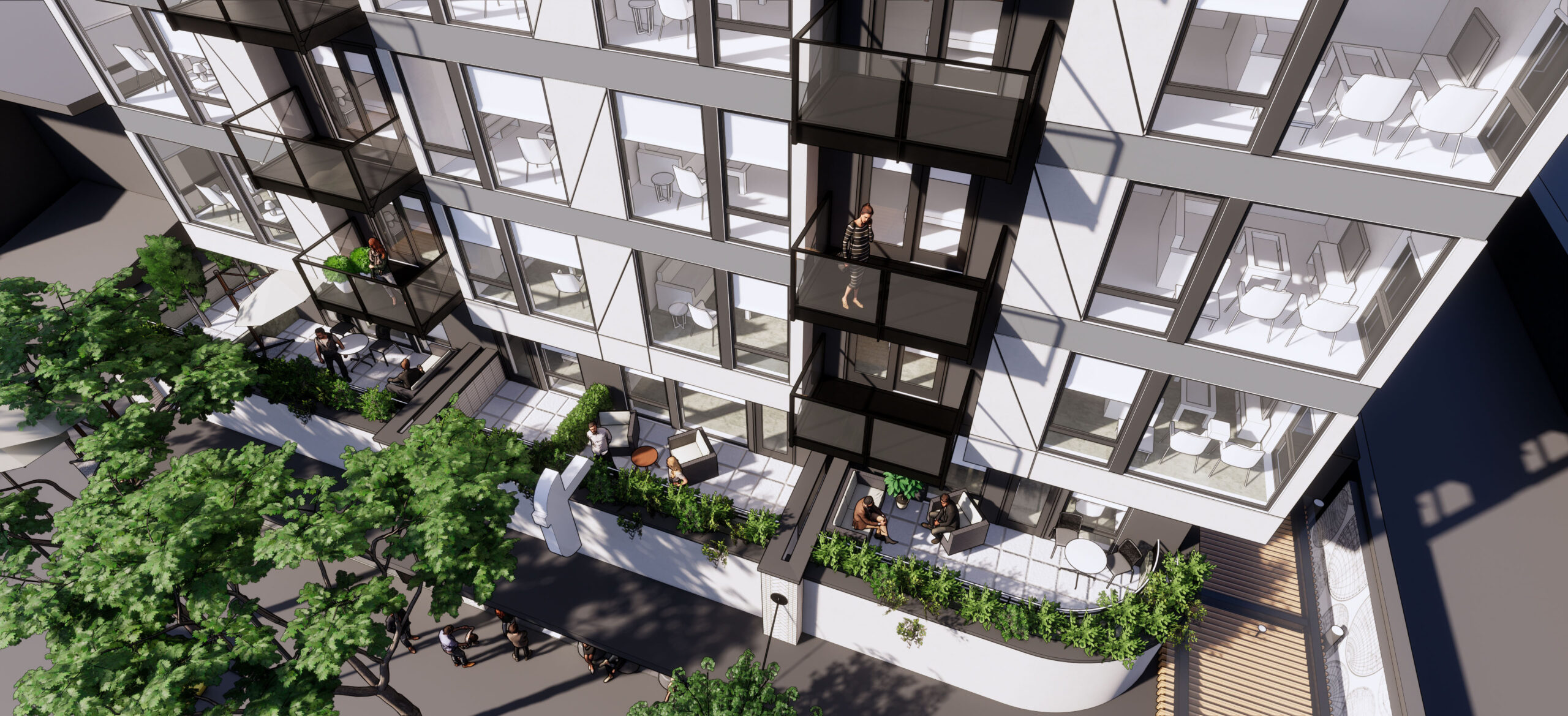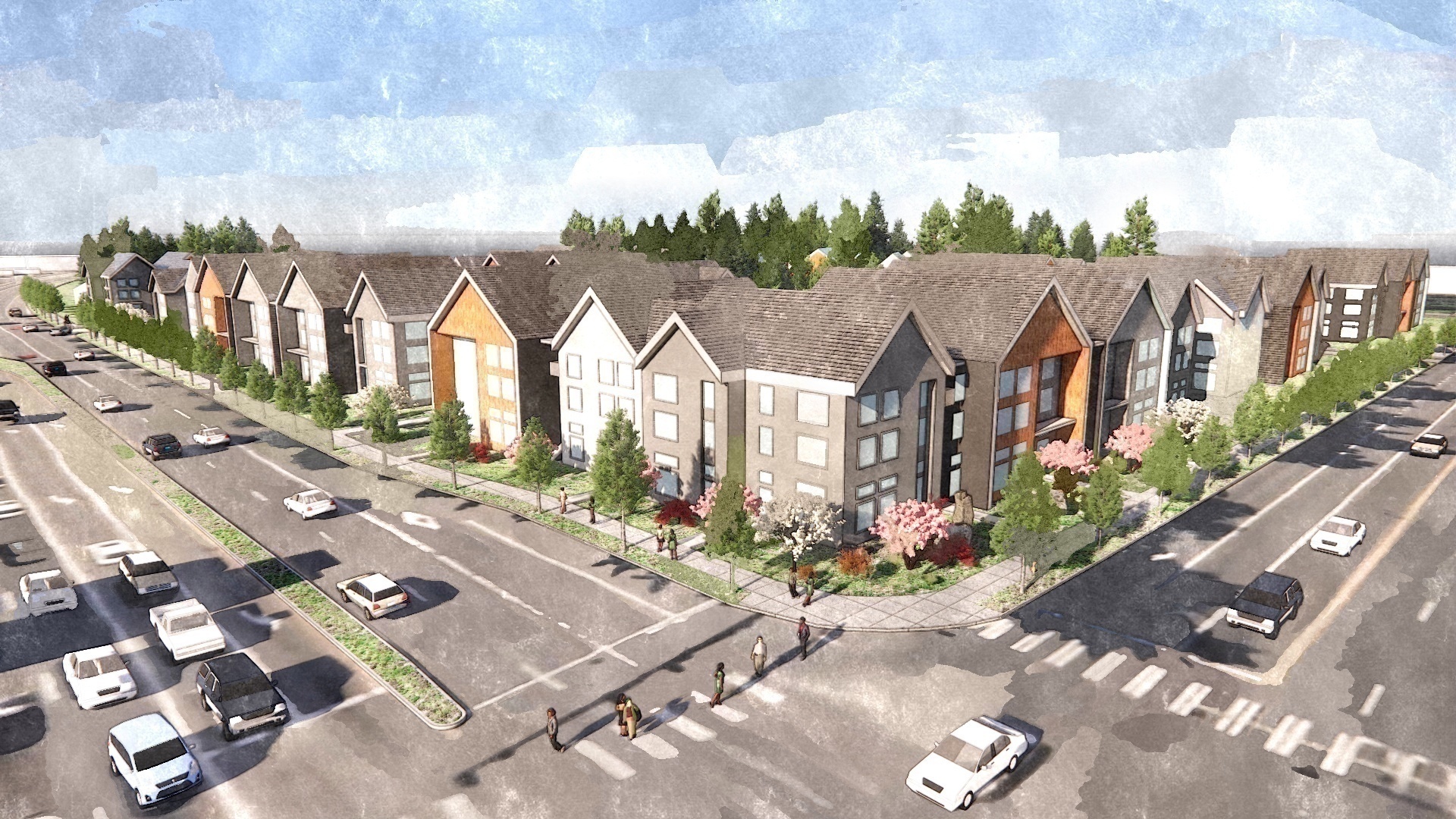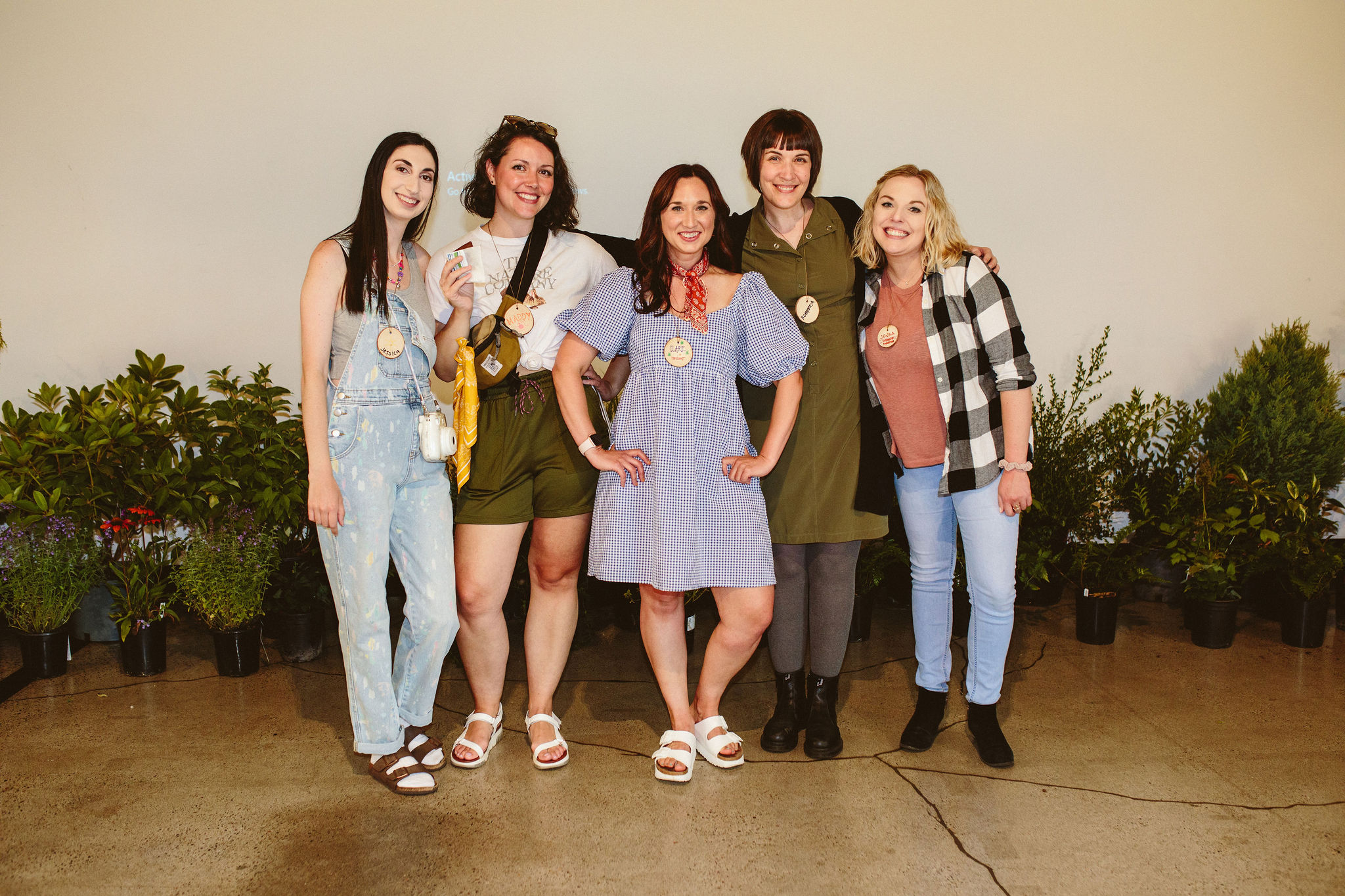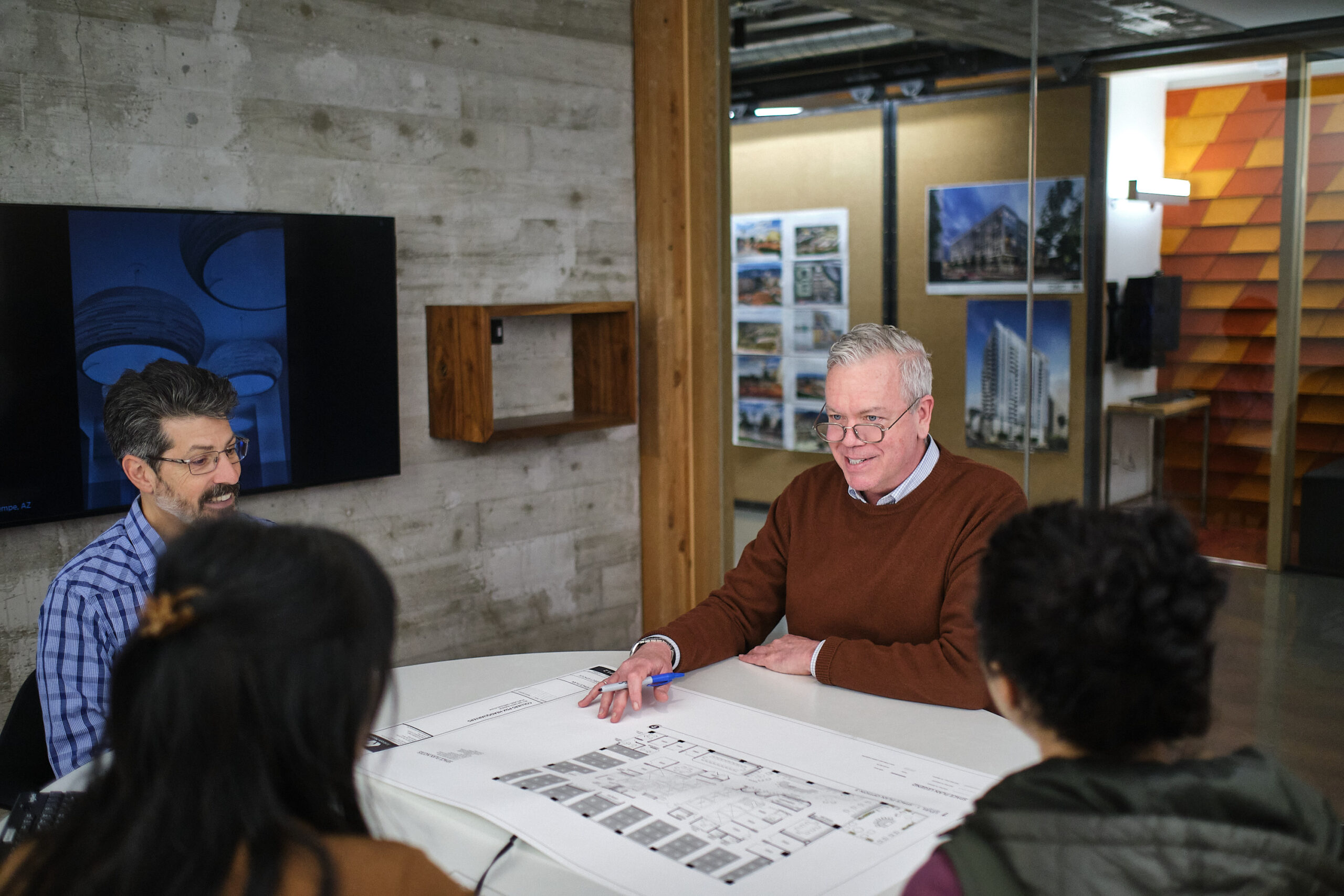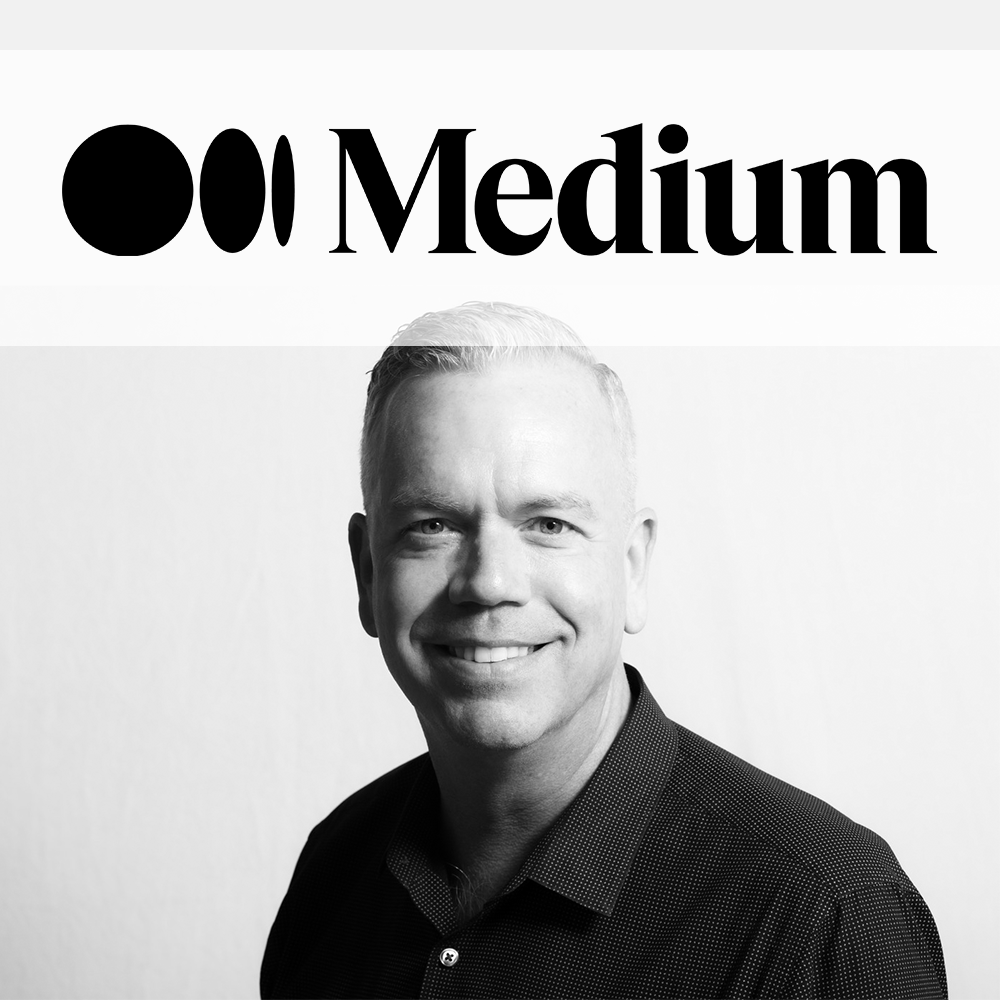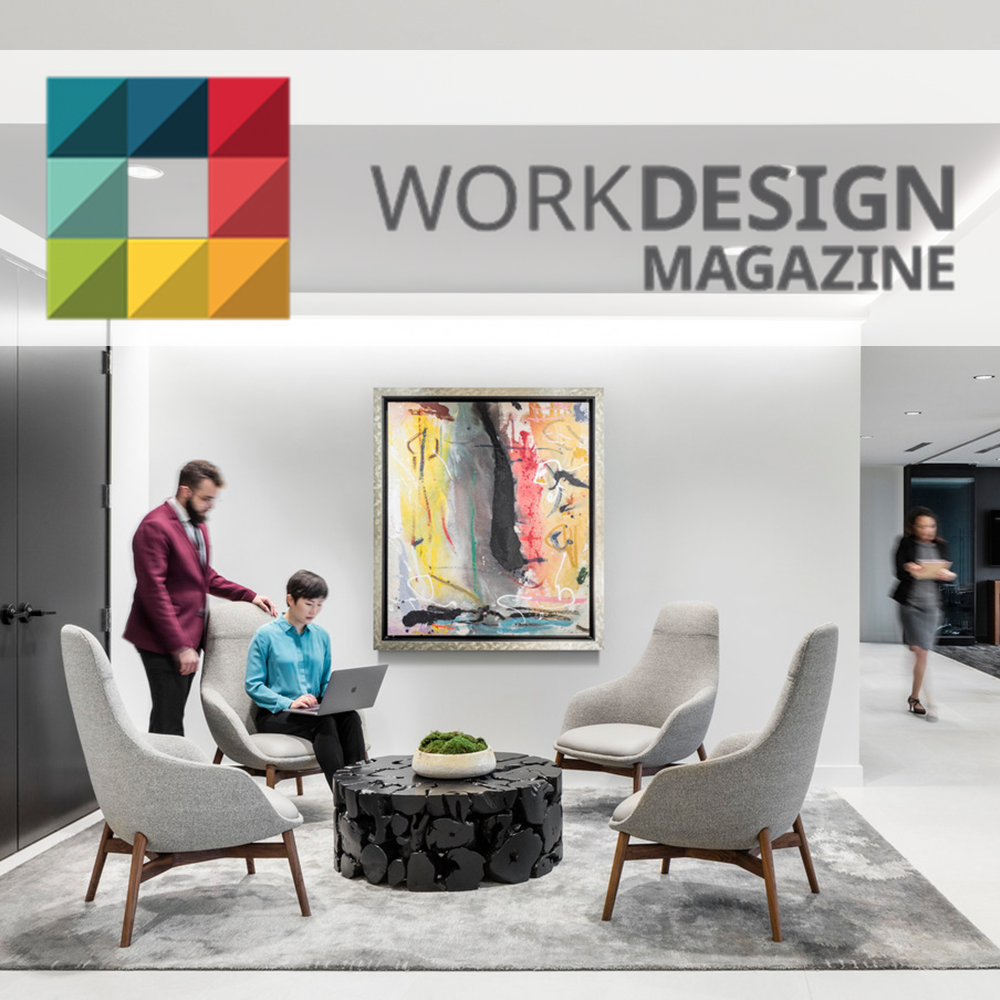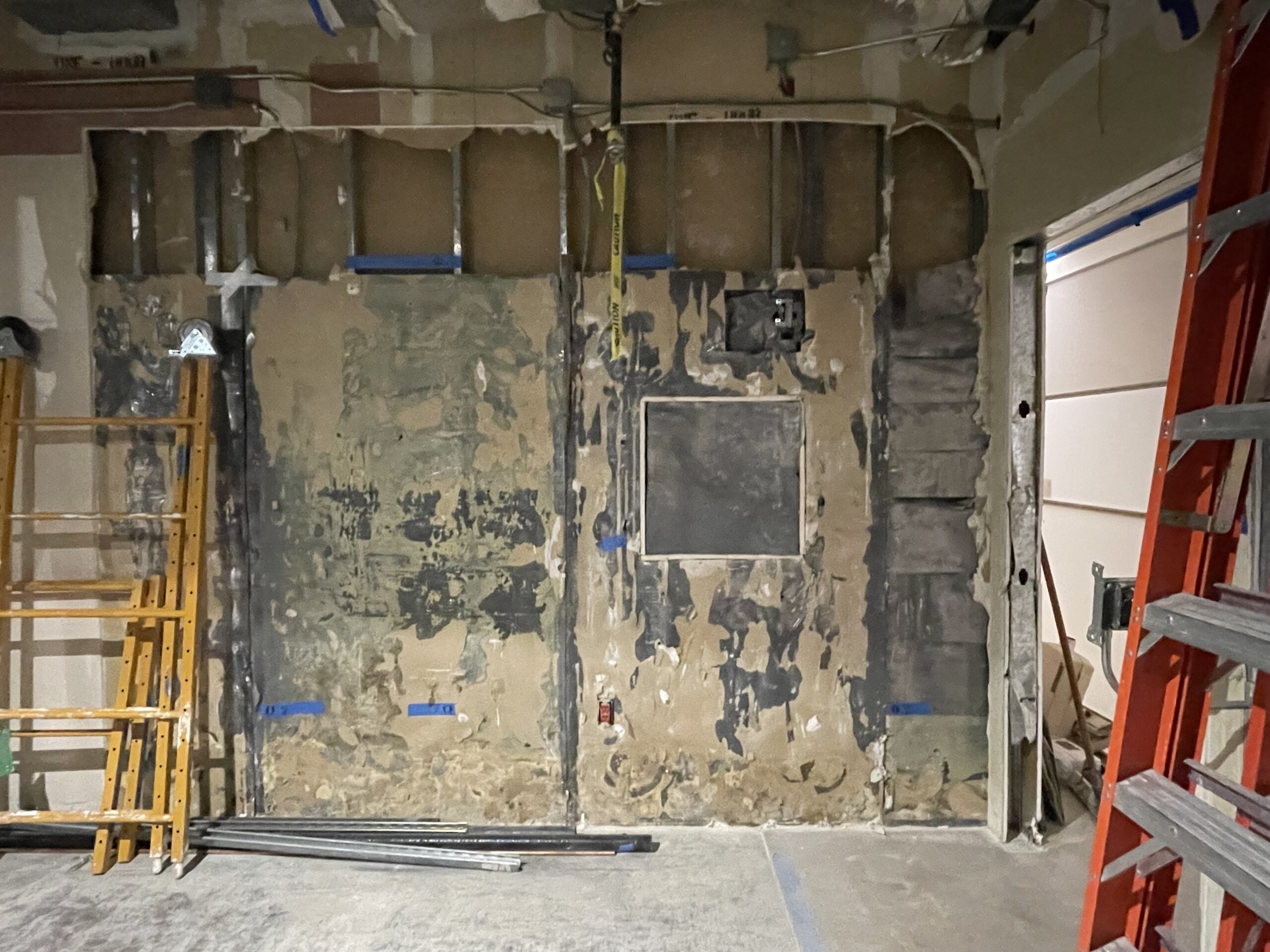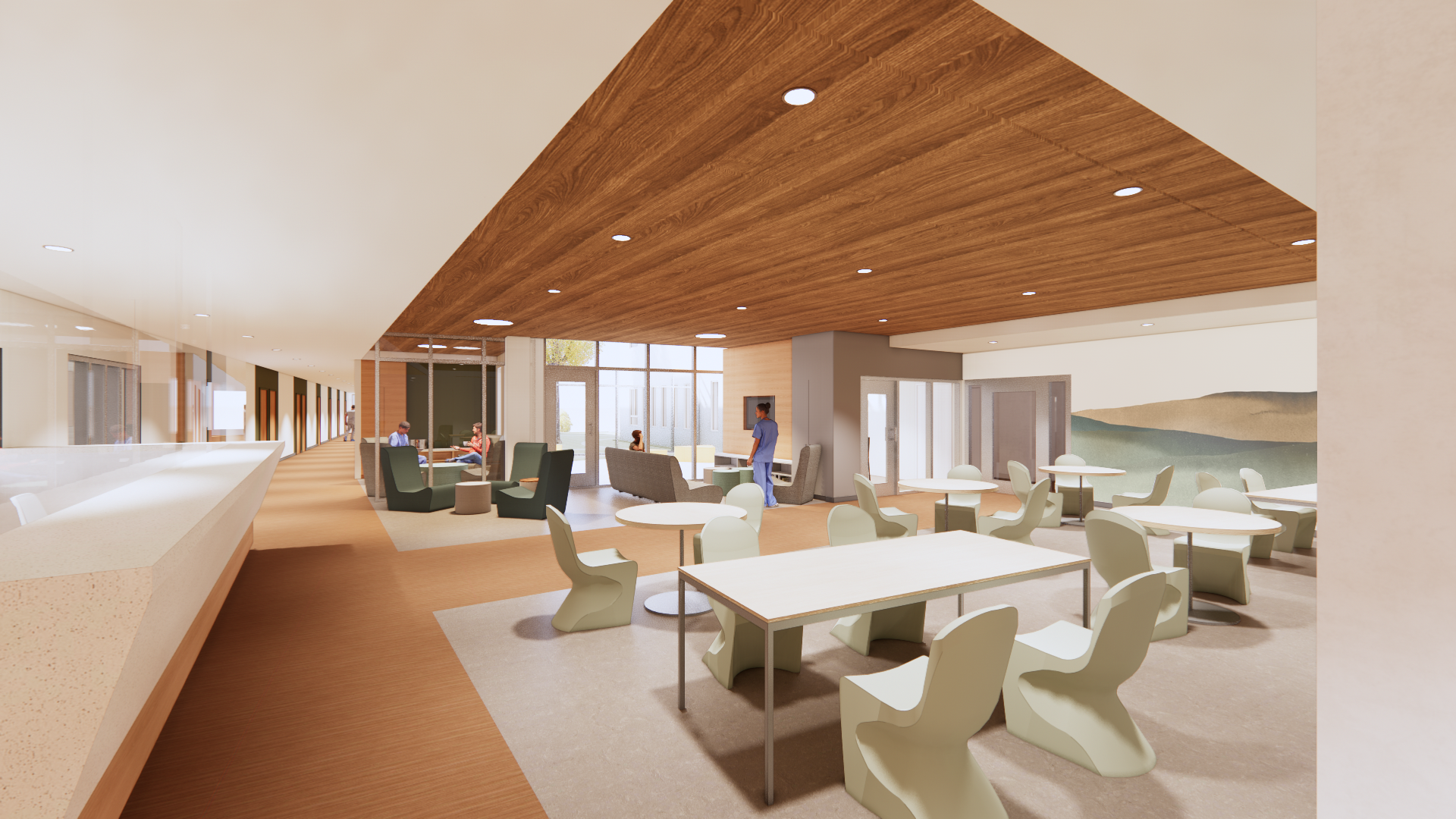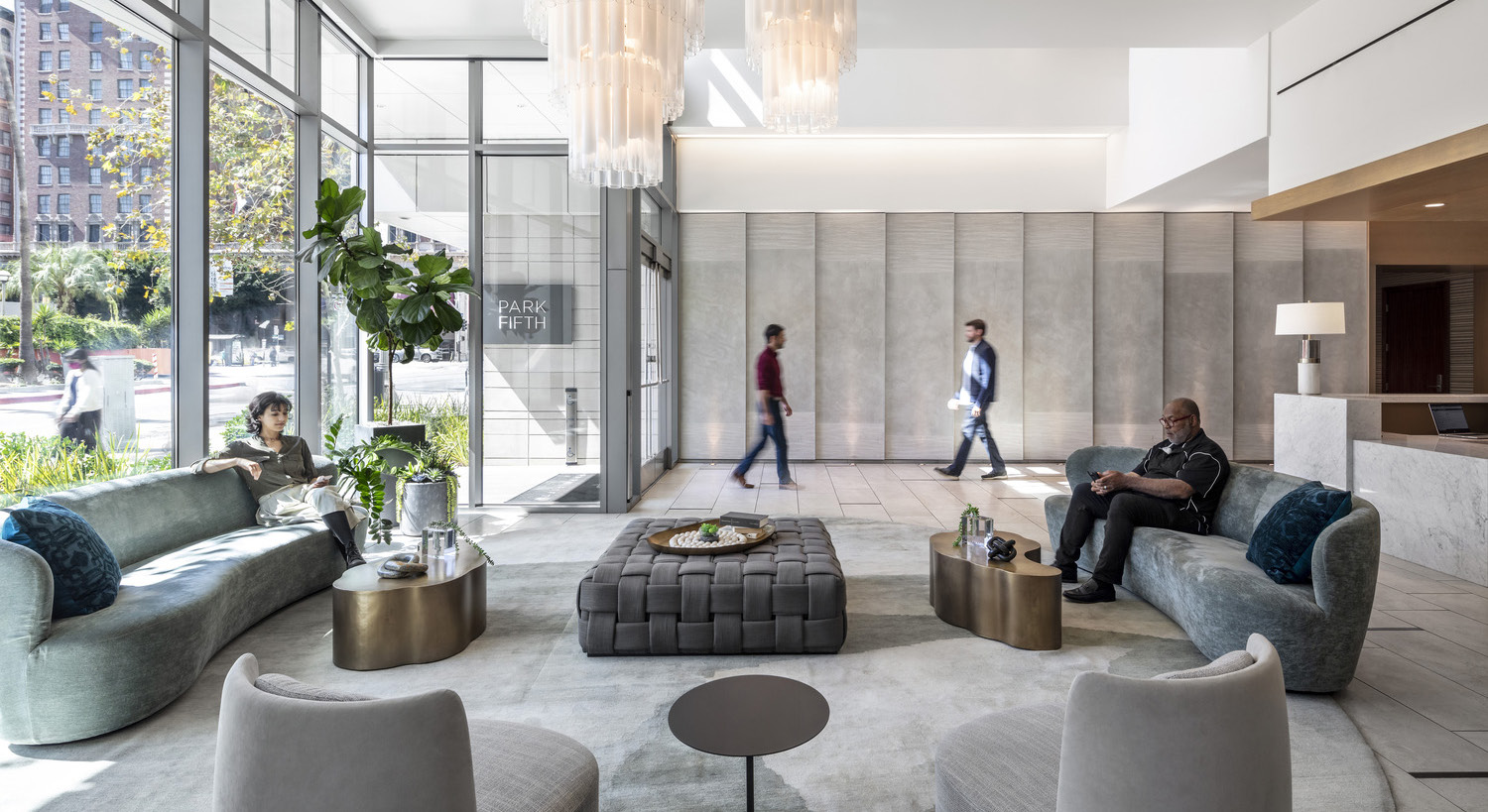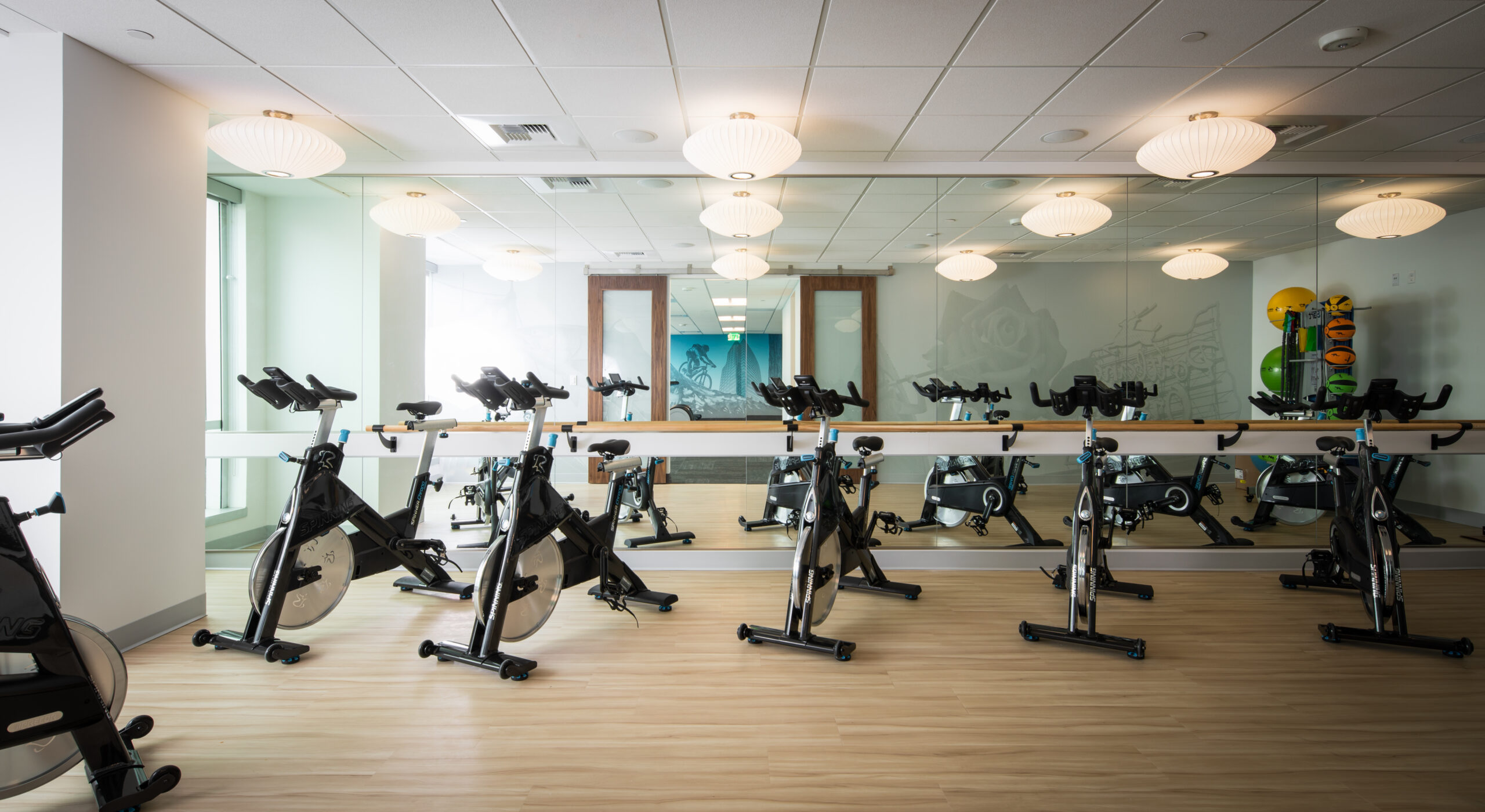Workplace Team’s Managing Principal, Bethanne Mikkelsen, notices the flows of workplaces and simultaneously motivates clients to stay current and inventive. She extends this expertise to our team, but promotes her knowledge beyond our firm to encourage diversity in the industry, as well as maintaining flexible working strategies that foster a culture of inclusivity. To discover more about her perspective, she has been featured in these articles:
New Seattle Development Design Review Exemptions
The City Council has amended the land use code to make two important changes to the design review program aimed at encouraging additional low-income housing. The first change permanently exempts low-income housing projects from the Design Review program. The second change provides a new Design Review exemption for projects that meet Mandatory Housing Affordability (MHA) requirements by providing units on site via the Performance Option under the Land Use Code. Projects that opt into the Performance Option can skip MUP and Design Review and proceed directly to Building Permit where land use code compliance will be evaluated concurrently with other review subjects.
Expediated Timelines:
Bypassing Design Review and MUP milestones could yield significant time and cost saving on project delivery.
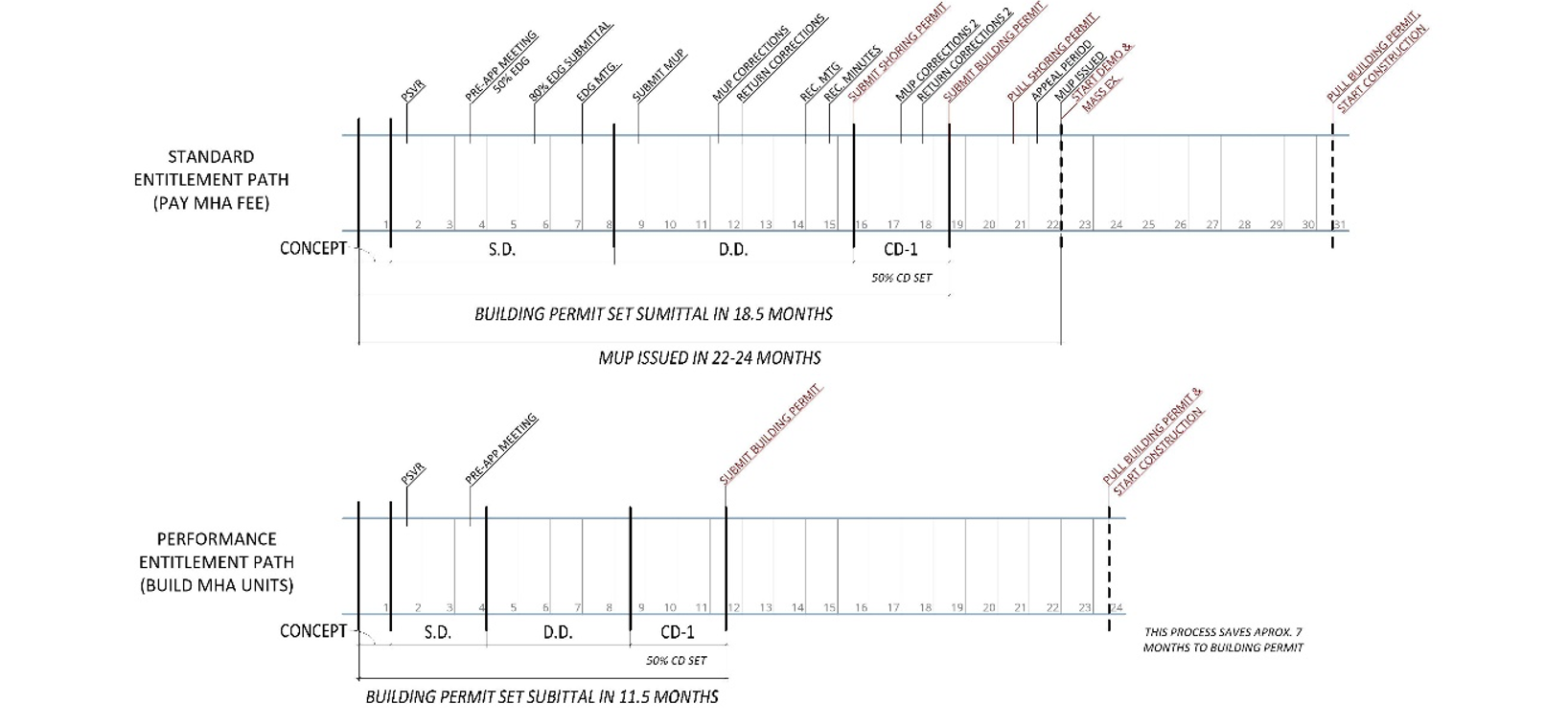
Schedule comparisons showing how fast the entitlements process can be if MHA units are provided instead of the ‘payment in lieu.’
Calculating the Number of Affordable Housing Units Required to avoid Design Review:
If a project contains commercial space, the area dedicated to affordable units required to satisfy the Performance Option is calculated as a percentage of the overall applicable area in commercial use. If a project contains residential space, the required number of affordable units is calculated as a percentage of the total number of dwelling units in the project. Developments that contain both commercial and residential space will use a combination of both calculation methods.
Performance Amount for Commercial Development:
The net unit area of affordable housing required to comply with Performance Option is outlined in Tables A&B for SMC 23.58B.050. The required square footage set-aside for affordable units varies respectively by zone, MHA suffix (M/M1/M2), and performance area intensity as noted in Map A for SMC 23.58C.050. For most zones, the area of affordable housing required ranges between 5-9% of the applicable commercial floor area.
Performance Amount for Residential Development:
The number of affordable housing units required to comply with Performance Option is outlined in Tables A&B for SMC 23.58C.050. The required percentage set-aside similarly varies respectively by zone, MHA suffix (M/M1/M2), and performance area intensity as noted in Map A for SMC 23.58C.050. For most zones, the number of affordable housing units required ranges between 5-11% of the total number of units to be developed in each structure.

Table from the Seattle municipal code indicating how many units need to be affordable for a project to be exempt from development design review.
Performance Standards for Qualifying Affordable Units:
Duration: Units provided to comply with the Performance Option must remain affordable for 75 years from the date of certificate of occupancy.
Distribution & Comparability: Units provided to satisfy the Performance Option must be generally distributed throughout the structure and be comparable to other units in terms of: Type of dwelling unit such as live-work unit or congregate residence sleeping room; Number and size of bedrooms and bathrooms; Net unit area; Access to amenity areas; Functionality; and Lease term.
Eligibility: Household eligibility varies with unit size and rental date.
At initial occupancy (lease-up), units with a net area of 400 sf or less are eligible to households with incomes up to 40% of AMI. Units with a net area greater than 400 sf are eligible to households with incomes up to 60% of AMI.
Thereafter at annual certification, units with a net area of 400 sf or less are eligible to households with incomes up to 60% of AMI. Units with a net area greater than 400 sf are eligible to households with incomes up to 80% of AMI.
Public Subsidy: Affordable housing units provided to satisfy the requirements of the Performance Option may NOT be used to earn public subsidy such as through the Multifamily Housing Property Tax Exemption (MFTE Program).
Rent Levels: Monthly rents for units with a net area of 400 sf or less, shall not exceed 30% of 40% of AMI. Monthly rents for units with a net area greater than 400 sf, shall not exceed 30% of 60% of AMI. “Monthly rent” must include a utility allowance for heat, gas, electricity, water, sewer, and refuse collection, as well as any recurring fees that are required as a condition of tenancy.
Annual Certification, Third Party Verification: Every year an owner of the rental unit must obtain from each tenant a certification of household size and income. Owners of rental units shall attempt to obtain third party verification whenever possible to substantiate income at each certification, which shall include contacting the individual income source(s) supplied by the household. If written or oral third-party documentation is not available, the owner may accept original documents (pay stubs, W-2, etc.) At the discretion of the Director of Housing, the owner may accept tenant self-certifications after the initial income verification and first annual recertification. The owner shall maintain all certifications and documentation obtained on file for at least six years after they are obtained.
Reporting: Once a year the owner of the rental unit shall submit a written report to the Director of Housing, verified upon oath, demonstrating compliance with Chapter 23.58C. The written report shall state: the occupancy and vacancy of each rental unit, the monthly rent charged for the unit, and the income and size of the household occupying the unit. The Director of Housing may require other documentation to ensure compliance including documentation of rents, copies of tenant certifications, documentation supporting determinations of tenant income including employer’s verification or check stubs, and other documentation necessary to track program outcomes and the demographics of households served. The owner of the rental unit shall pay the Office of Housing an annual fee of $150 per rental unit for the purposes of monitoring compliance with the requirements.


By Jennifer Sobieraj Sanin, Managing Design Principal, and Michael Lama, Project Designer
The Art of Efficiency
Popularized because of their connection to nature and relative abundance of space, garden-style apartments are lower density, low-rise housing complexes that are typified by their green, garden-like surroundings. Through Ankrom Moisan’s experience designing high-quality low-density communities, we’ve found that successful garden-style design is all about striking a balance. There’s an art to creating a community that is highly livable and authentic, yet also efficient and economical. Based upon our expertise with this style of housing, here are our dos and don’ts for creating successful low-density garden-style communities.
Do capitalize on site assets.
Site plans are everything when it comes to designing unique low-density housing. Before any buildings are designed, take note of site features such as topography, open space, noteworthy views, and existing natural resources such as bodies of water or mature trees. Designing a site plan around these features elevates the design of a garden-style apartment community to be authentic to its location, setting the place apart as a destination with its own identity. For example, at Deveraux Glen the site plan intentionally takes advantage of the surrounding green space by orienting the buildings to maximize views. This is apparent in the irregular perimeter, shown below.

Deveraux Glen site plan | Aerial of a neighborhood by Erik Maclean
Do balance the parking.
While parking yield is important, preserving the character of the place is also essential for success. This requires finding a careful balance. Because available parking ratio ultimately determines home yield, and not allowable density, parking drives (pun intended) everything. Efficient footprints like parking must be designed first, with buildings fitting into the site afterwards and conforming to the lot’s parameters based on the home plan. However, that does not mean the parking lot has to be the focal point for a site’s layout. Remember: nobody wants to live in a parking lot. A certain degree of intentionality is required to design a desirable community that has a sense of place and doesn’t just feel like an asphalt lot.

North Ogden masterplan | Garden-style development photo by Maahid
Don’t neglect landscaping.
Use greenery to break up the humdrum of asphalt. Whenever possible, a space of 15 feet between parking and ground-level homes is ideal for garden-style, as it budgets 5 feet for the pedestrian sidewalk and 10 full feet for landscaping. There should also be landscaping between head-in parking stalls. 5 feet is the minimum amount of space recommended, but again, having more room for trees to be planted both screens the car park from above, and improves the quality of the space at ground level. Utilizing landscaping in this way improves the apartment’s sightlines and views for both the ground-floor homes that look towards the parking lot and the upper-story homes looking down on it. While covered parking may improve the visual landscape of a community, taking it a step further with green roofs or alternated landscaping does much more for both the environment and residents. The ultimate goal in garden-style design is to create a place that is as livable as possible to drive absorption, retention, and rent rates.
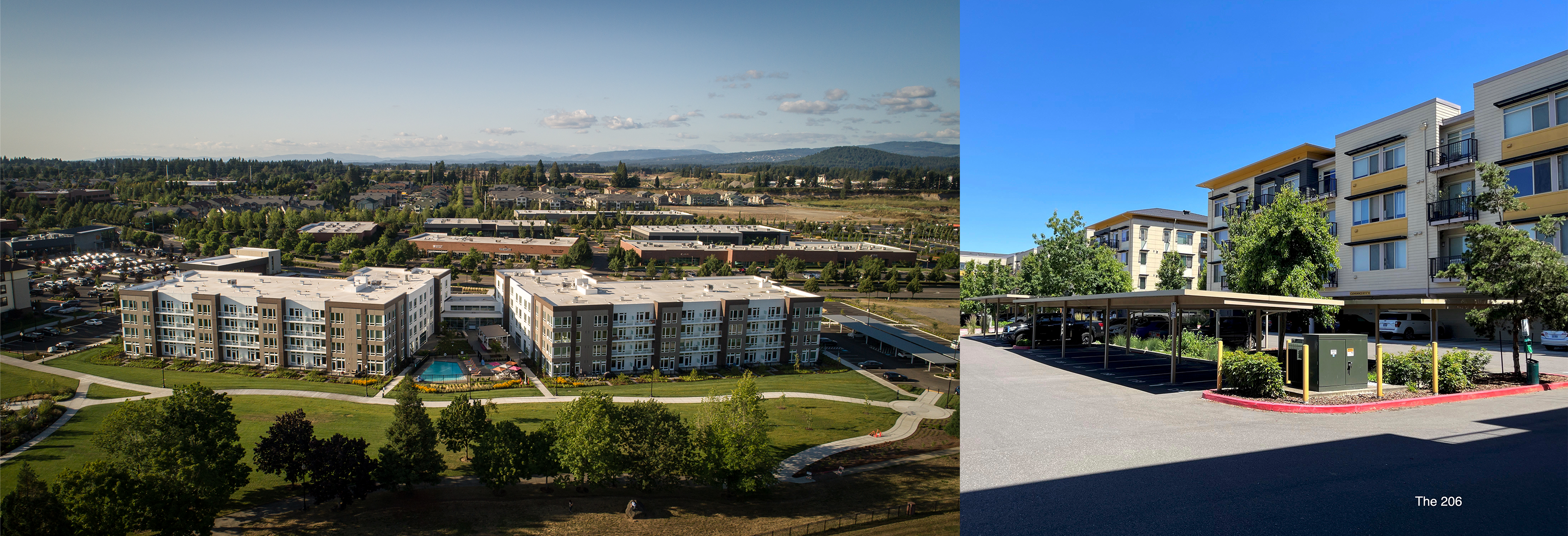
Club at the Park | Parking lot at The 206
Do consider walkability.
Since garden-style home doors are exterior-facing, the outdoor experience must be carefully considered. Distances between frequently visited areas need to take walkability into account. Remote parking may allow for an increase in home yield but result in a reduction in rent rate. Designers should be very intentional with how far residents will have to walk to get from their cars to their front door, and vice versa. Parking allocation studies need to be done to assign parking stalls to certain buildings and determine whether or not distances and available parking options realistically work. Trash enclosures, too, need to be within a reasonable distance from residential homes and located along a route accessible to trash collection vehicles for removal. By putting forethought into residents’ travel patterns, designers can create a highly livable place.

Meridian Gardens rendering | Kitts Corner rendering
Do enhance ground-level homes.
Ground level living is perhaps the most important design consideration for low density garden-style apartments. There are a handful of ways to enhance first-floor ground-level homes, the most effective being the inclusion of a stoop at the entrance. Stoops help create a sense of defensible space, and resident identity. Ground level homes also benefit from street elements. Streets are characterized by parallel parking and sidewalks, whereas parking lots are based on 90-degree parking, which means that light from cars in parking lots are angled directly into ground-level windows and the amount of land dedicated to the car is the greatest. Ground-level homes often receive the short end of the stick, so giving those homes extra thought can go a long way for improving the resident experience.
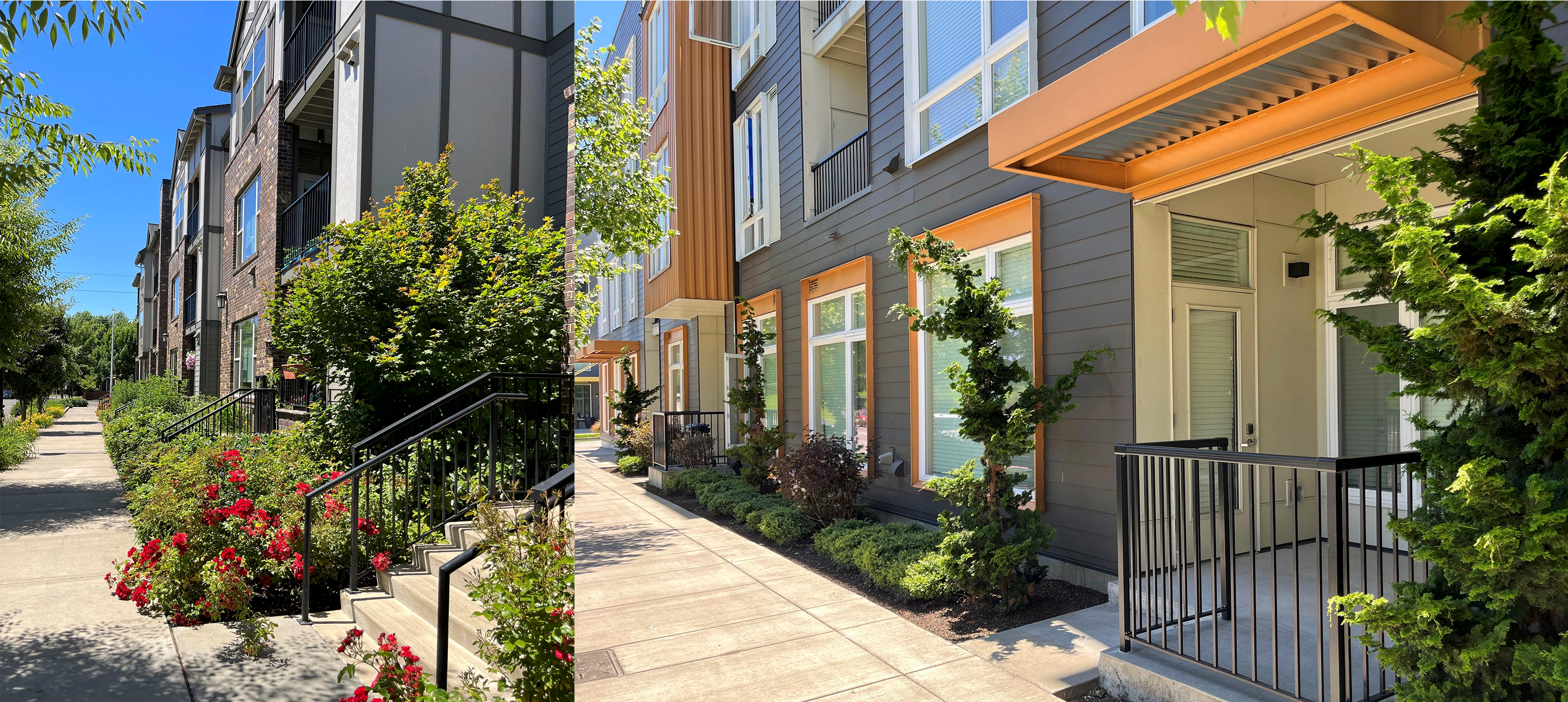
Stoops at The Villas at Amberglen West | Ground-level porches at The Arbory
Don’t underestimate the importance of identity.
Develop an encompassing identity for the entire community through a central amenity. As the heart of the place, the amenity building reinforces the character of the site. Surrounding spaces should support that identity through the quality and character of their architecture and interior design. Don’t shortchange design fees here; It’s better to spend up on the club house and economize elsewhere than to forgo the identity established by a central amenity.

Clubhouse at Seasons Apartments and Farmington Reserve | Clubhouse at The 206
These guidelines are only a brief overview of some of the key principles to creating successful garden-style communities. There is a tremendous level of consideration of the specifics of a site when translating these principles into a successful design. What it all essentially comes down to is hiring an architect who understands these design principles and how to apply them to create efficient, high-quality communities. And of course, having beautifully maintained greenery doesn’t hurt, either.

By Don Sowieja, Principal-in-Charge
An Interview with the Oregon Chapter’s 2022-2023 IIDA President, Clare Goddard
I sat down with Clare Goddard, now Past President of the IIDA Oregon Chapter to hear about her reflections on the 2022-2023 Board year.
Q: What has been the most rewarding part about being IIDA President?
A: I am going to miss the chapter leader conferences. There’s something so powerful about connecting with other IIDA leaders across the region and the US and being able to commiserate or learn from them (or just make new friends). Even though you don’t get a weekend, I always come back feeling excited to tackle a new challenge.
For my term as President, I think the most rewarding part was being a catalyst for change in how the board operates. Having the board willing to not continue with the status quo and embrace change was exciting; not only because it lifted a huge weight off my shoulders, but I feel I was able to make my mark on the IIDA Oregon chapter.
I also credit IIDA with keeping me sane and connected when we were all remote – especially during lockdown. Being a part of IIDA and having an outlet outside of work helped to fill my cup and to build my network. I am truly so grateful to be part of this design community.
Q: What would be your best tip for balancing or prioritizing IIDA and work, life, etc.?
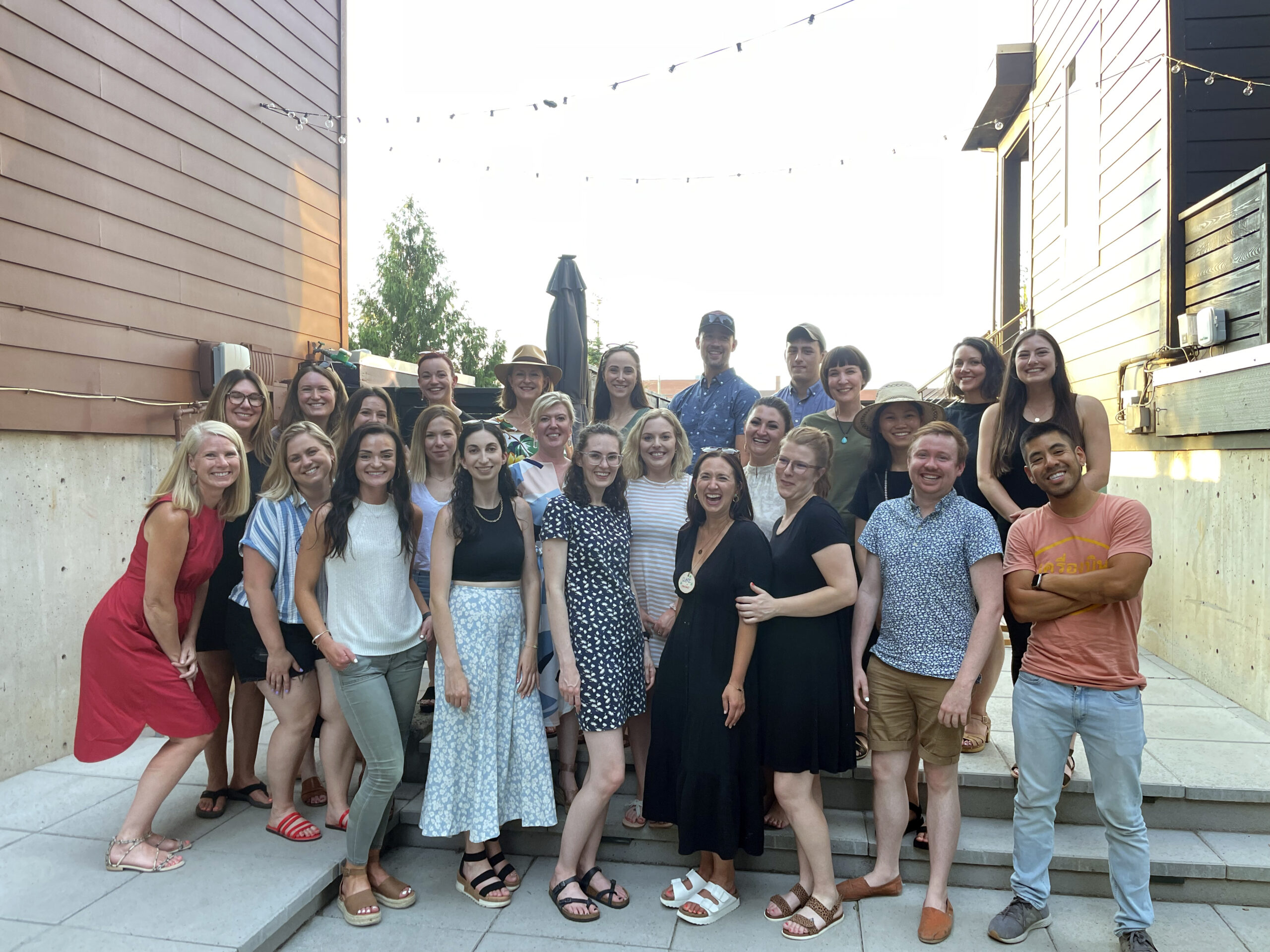
A: I’ve always had a very clear division between my work and my home life, and those boundaries really helped me in my presidency as well. I had to be aware of my To Do List- I had to get detailed and ask myself what I can accomplish today. What can I realistically accomplish this week? And how am I going to divide that up?
I also set strict hours for myself – capping Ankrom work at 40 (no overtime) and trying to do IIDA work after dinner or on the weekends. I really had to focus on prioritizing and stick to those priorities.
I think there were sometimes when there was not always the balance that I would have liked between work, IIDA and personal life. In the end though, I was able to find that harmony – and harmony to me is such a better word than balance because balance to me is like one side is always winning and there is more effort in just making them equal. Harmony means that you’ve found some way to make both your personal and your professional life work together and neither one is weighted.
I was also incredibly lucky in my presidency to be able to work 100% remotely from home. That has also allowed me to be more flexible and to be better able to create that harmony. Flexibility is key- being able to make my schedule work for myself.
Q: What has been the most challenging experience during your presidency?
A: It was the first six months of my presidency before I took a step back and asked the question “why”. Why did we operate the way we operated?
At that time, I was so overwhelmed and felt like I was letting everyone in my life down because I was stretched so thin and felt like I was not making a difference – that I was just trying to keep my head above water. I was just going from event to event, from meeting to meeting and not really accomplishing anything. And then I just had this moment where I realized, I was the president and could make a change to improve how we operated and the president’s role in general. That I could change it, and that I needed to change it. I immediately felt a sense of calm and empowerment. How can we make the Presidency better, how can we make the Directors’ positions better? Giving everyone – including me – a sense of agency to give back to our design community in a more thoughtful way.
Q: What have you learned while being the IIDA President, skills or experiences, that transfer to your work or have helped you grow in your role here at Ankrom and then specifically on our Workplace team?
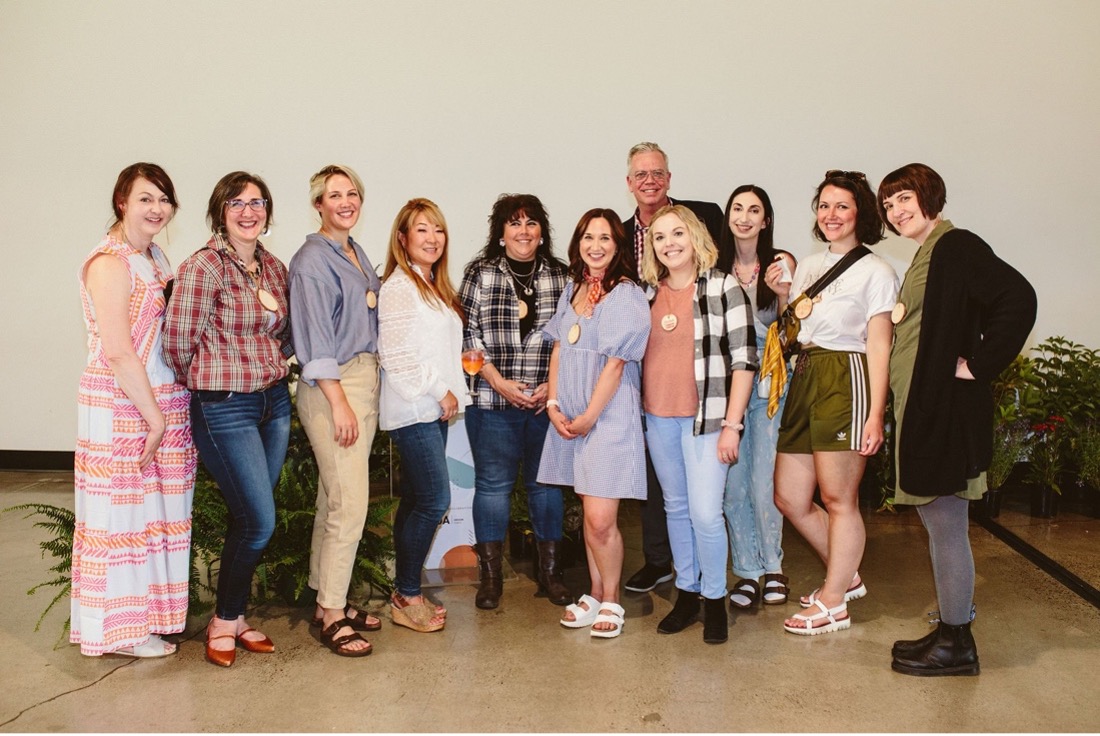
A: The biggest thing being IIDA President has helped me with is delegation. I realized that I could lean more on my team and that I do not have to do it all. I also got to use my business degree – so reusing a skill that had been gathering dust – since running an IIDA chapter is like running a small business. In running that small business and planning multiple events, I was also able to practice my project management skills.
The other skill I got to work on was networking and relationship management. As IIDA President – attending both local and national events – I am the face of interior design for the state of Oregon (as our mission statement says). Therefore, when I am at these events, I need to network and act accordingly to make sure that I’m supporting sponsor relations, board member relations, and in general making sure I am representing the organization to the best of my abilities. And I think that’s directly applicable to my role at Ankrom, that when I am at work events or gatherings, I am a representative for Ankrom.
Q: How are you, your partner, and your dog going to unwind after finishing this year?
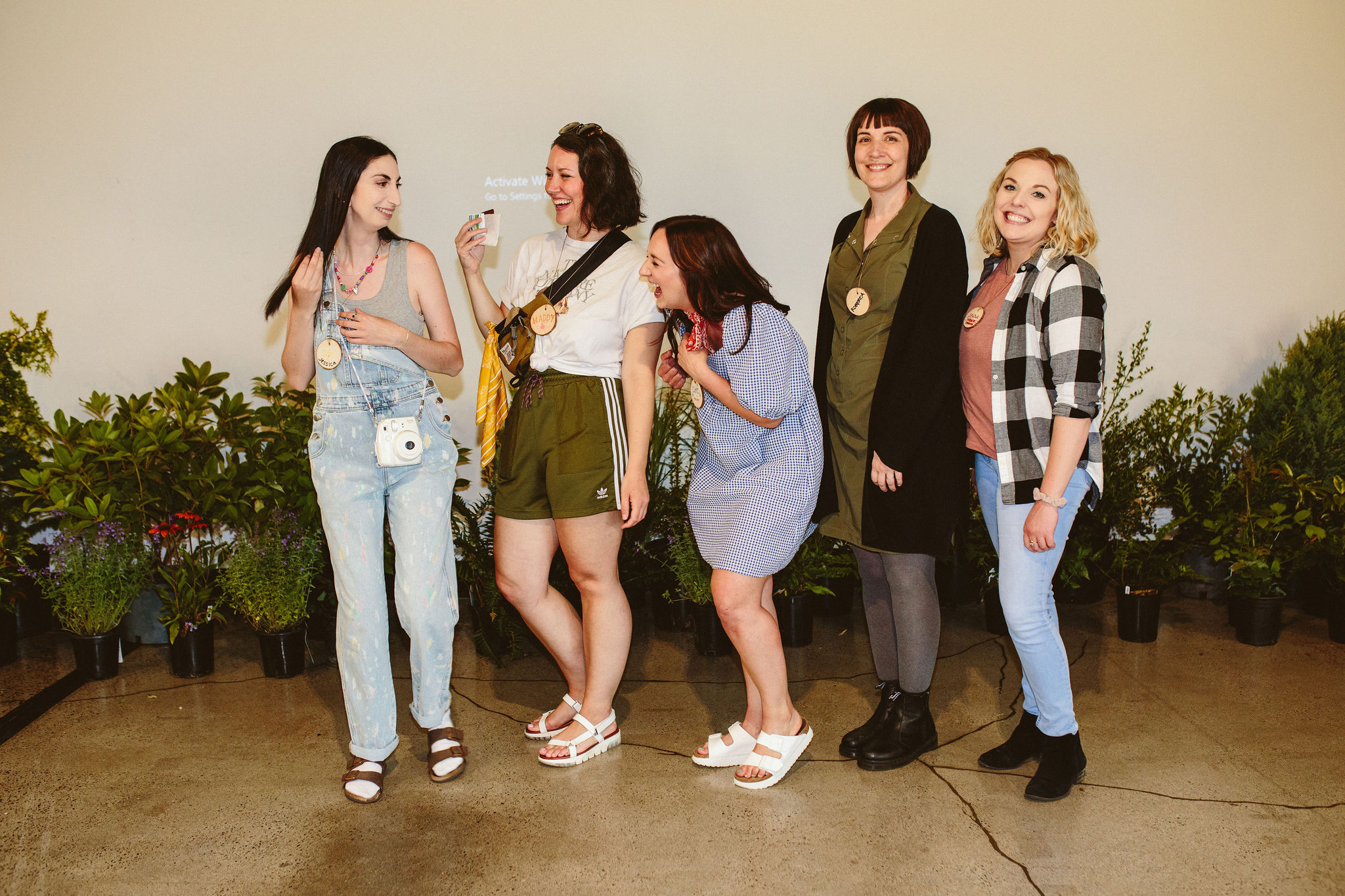
A: We have already taken and planned a few trips to get more quality time together! We took our girl Millie (dog daughter) on her first camping trip a few weeks ago – Millie even SUP’d for the first time. And then in October after the Design Excellence Awards are done, Jacob (partner) and I booked a week trip to Sedona, AZ. We haven’t been on a long trip since I became President, so we’re going to take a helicopter tour of the Grand Canyon, go hiking, mountain biking, go to a spa, enjoy some wineries, and eat some yummy food.
Also, since I will now have free time, Jacob bought me ceramics lessons at a local pottery studio. I am excited to pretend I am on The Great Pottery Throw Down!
Thank you, Clare, for an amazing year- I’ve loved watching you be the President with such grace and honesty, both as a colleague and as an IIDA board member!

Clare Goddard, Senior Associate Interior Designer
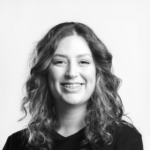
Emily Feicht, Interior Designer
Conversations with Michael Stueve
Our very own Michael Stueve, Workplace Principal and UI/UX Strategist, is always thinking innovatively about the future of workplace and is also eager to share his values that shape his experienced perspective behind workplace design. Not only has he recently developed “The Office as an Ecosystem” strategies, but he has been featured in these articles:
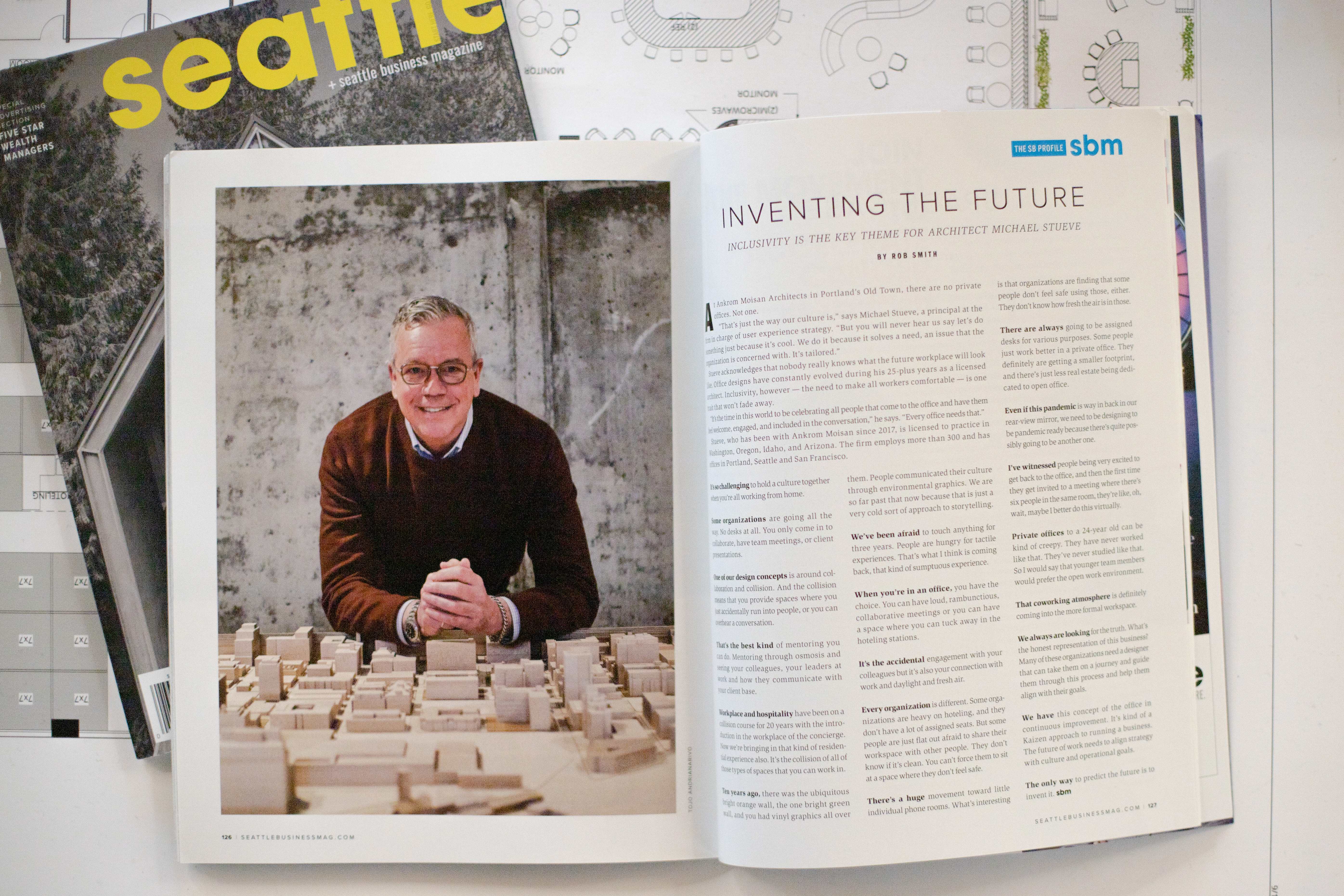
Seattle Magazine: Inventing the Future (available in print only)
Ankrom Moisan’s Healthcare SPAKL Team – Big Focus on Small Projects
The SPAKL team is Ankrom Moisan’s thorough and decisive resource for solving complex and challenging Healthcare project designs. Looking beyond initial or obvious facility concerns and truly partnering with clients for a better understanding of the maintenance and equipment upgrade projects are salient to their success.
Kimberleigh Grimm, Associate Principal, discusses the scope of projects that the SPAKL team undertakes and the challenges that these types of Healthcare projects often present. Kimberleigh’s excitement about and enjoyment of this topic is palpable. She is representative of the strengths and enthusiasm that the SPAKL team brings to the table.
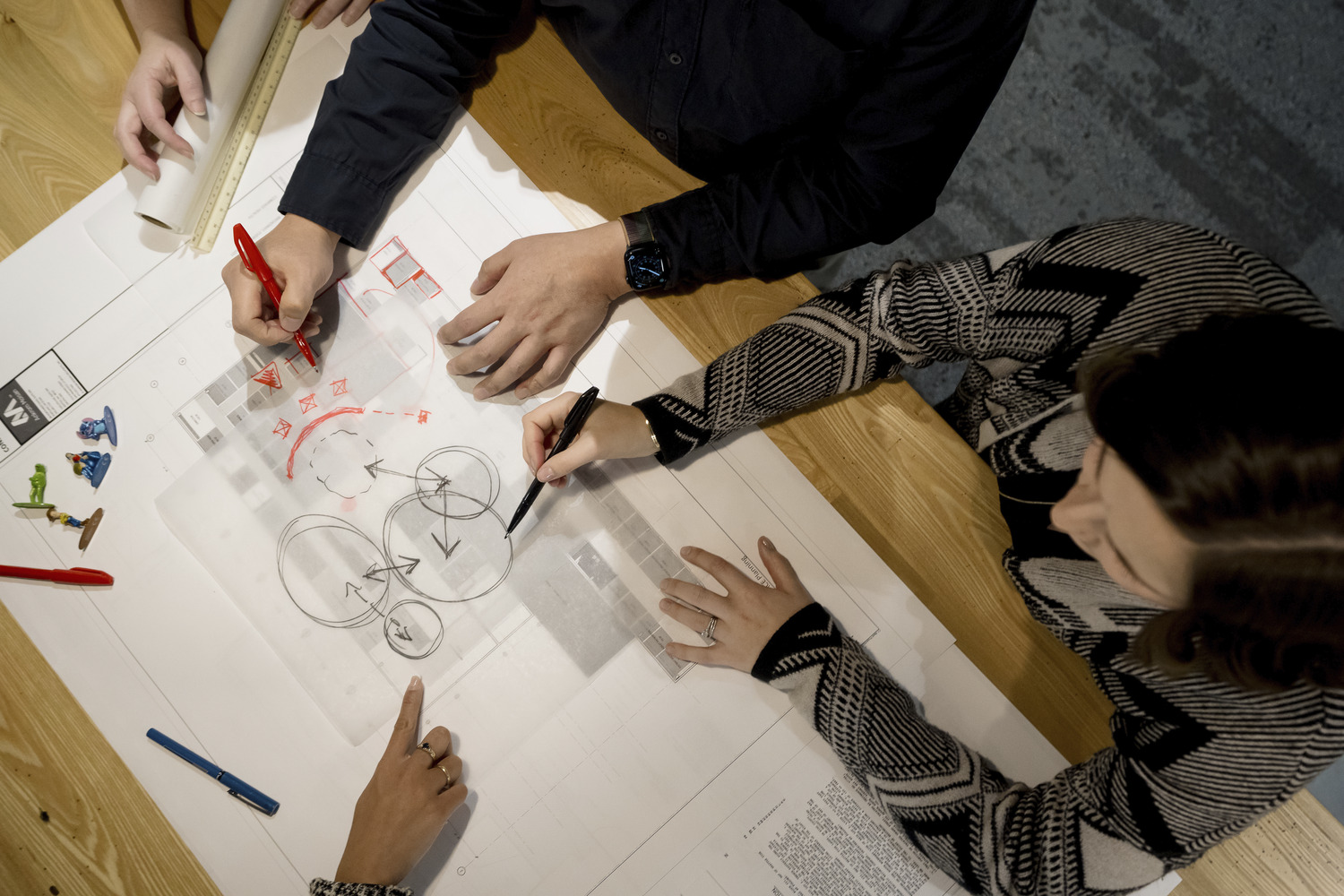
Ankrom Moisan’s Healthcare SPAKL team designing together
Q: What is SPAKL?
A: SPAKL is a subset of the Ankrom Moisan Healthcare team that focuses on specialized, problem-focused healthcare projects. It stands for Special Project Alterations Knowledge League, and it is a team that is experienced in (and committed to) maintenance projects in healthcare systems. We don’t wear capes or fly faster than a speeding bullet – our super-power is the knowledge, enthusiasm, and fun that we bring to this type of project work.
Q: How long has SPAKL been an AM Healthcare team feature?
A: Maintenance projects have always been the core of our healthcare team’s work. SPAKL emerged from internal conversations about creating a focused team with a depth of knowledge in acute healthcare renovation work that is dedicated to increased efficiency, both for us, and our clients. Each project builds on knowledge gained in previous work to enable the next to be even more successful.
Q: How and why does AM Healthcare SPAKL approach differ from other firms’ approach to similar projects?
A: Most firms aren’t truly interested in maintenance or equipment replacement projects. They accept this work to leverage the client relationship for bigger, “better” projects. Because these projects aren’t really valued by most firms, they typically assign less-experienced staff that don’t understand the intricacies of the projects.
This is not AM’s approach. We like what we call the “dirty jobs”. We like them because we understand that they are just as important to a healthcare facility as a new build or a full clinic remodel. We developed the SPAKL team around these types of maintenance projects, and our team is highly experienced in healthcare renovations. We understand the sophistication of these projects in terms of improved patient and staff experiences, reducing construction disruptions and maintaining continuous operations, and understanding existing conditions. We also understand that these projects usually have tight fees (and tighter schedules) and leverage our knowledge and experience with each facility and jurisdiction to maximize efficiency.
Another way we differ from other firms is that we genuinely enjoy this type of work – we love the complexity and the fact that each project is a unique experience.
Q: What makes a SPAKL project unique to other Healthcare projects?
A: We like to say that SPAKL projects are problem-focused, not project-focused. There is a wide variety of projects ranging from equipment replacement projects to maintenance projects to make-ready projects, but the one thing they have in common is that they are intended to address a specific facility concern.
Unlike a typical project that is tasked with helping a facility re-imagine an aspect of their operations, we are problem solvers. Aging equipment? DOH citations? Safety or infection prevention concerns? We evaluate the existing conditions and work with the facility to come up with efficient solutions.
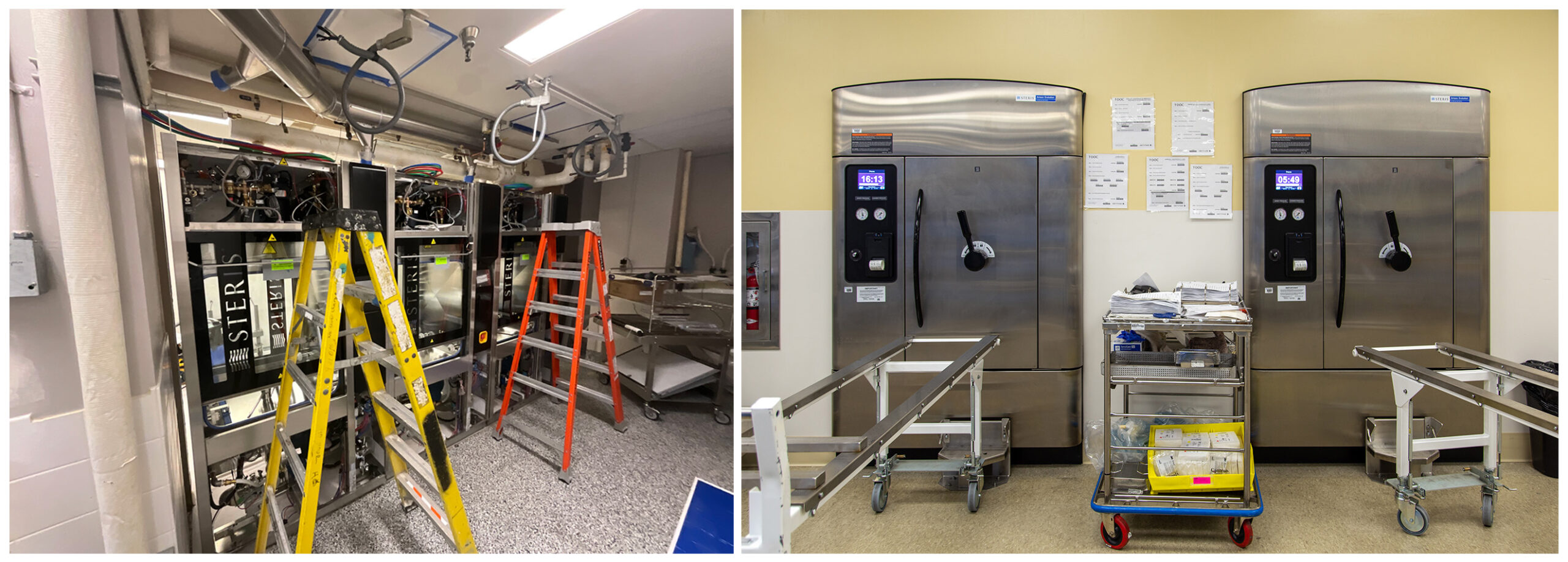
Washer/disinfector installation; Sterilizer replacement
Q: What is the biggest challenge when organizing around the client’s operations?
A: Every project is unique and has its own challenges. Sometimes the challenge revolves around how to minimize disruption during construction. This can range from minimizing infrastructure shutdowns to reducing construction impacts in terms of activity and noise. For example, one project might be concerned about noise impacts to adjacent NICU patient care, while another project’s main issue is minimizing the number of electrical shutdowns required over the project. The key to navigating this is to listen and ask essential questions to fully understand the facility concerns.
Q: What does it mean to “treat them with care”? How do you do that?
A: At AM, SPAKL projects are as significant to us as bigger, fancier projects. SPAKL projects may never generate pretty pictures or win design awards, but they are critical to the functioning of a facility. Replacing outdated equipment increases throughput, improves patient outcomes, and improves both the patient and staff experience. That is critical.
We treat each project with the same care that we bring to the larger projects that we work on. We believe user engagement is crucial, and we work from the beginning to bring the users into the design process so that we can understand both immediate and long-term objectives and concerns. Our style differs from other firms in that we don’t do presentations before the user groups, we host discussions – and we consider the Facility to be the experts in that discussion. It is an open dialog intended to lead us to the best solution. The Facility knows their patient populations, they know their current concerns and what things are working and what is not working. They know what they like and what they do not like. We listen and have an open dialogue, and that is how we get to the best solution for each project. What is right for one facility is not necessarily right for any other facility.
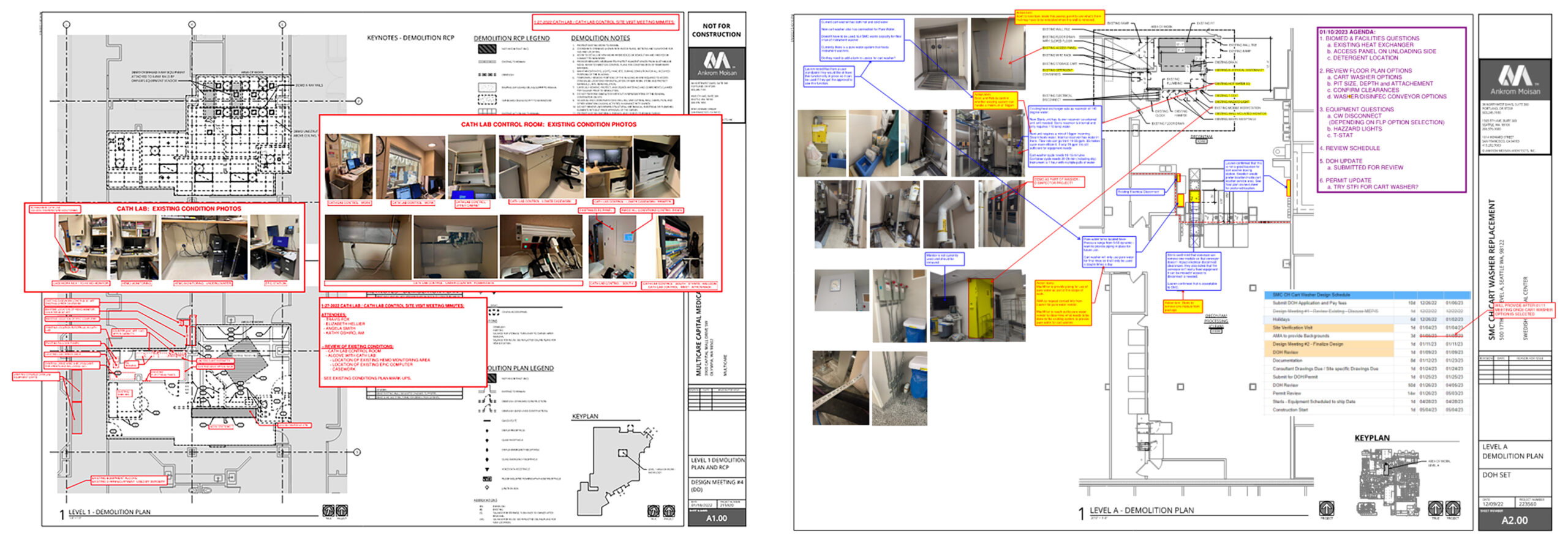 Meeting discussion documentation
Meeting discussion documentation
Q: What are the methodologies that you’ve found most useful?
A: SPAKL projects often have tight budgets, and we use a lot of tools out of the LEAN toolkit. We feel that actively involving users in the design process leads to better engagement and better outcomes. For example, rather than providing design options and asking users to pick one, we like to have tabletop exercises where the user group can propose design options of their own and then discuss them. Which means, rather than us telling the users what we think the design solution is, the users are engaged in the design process to test their own ideas. In the end, the user group becomes the best advocate for the final design because they feel ownership of the project and feel heard throughout the process.
We also feel that an early and deep dive into existing conditions is key to a successful project. Existing drawing documentation is great, but it is only part of the story. We want to really understand the totality of existing conditions so that we can anticipate potential problems and address them early in design. You will never hear the words, “we can figure that out in CA” from a member of the SPAKL team. Never.
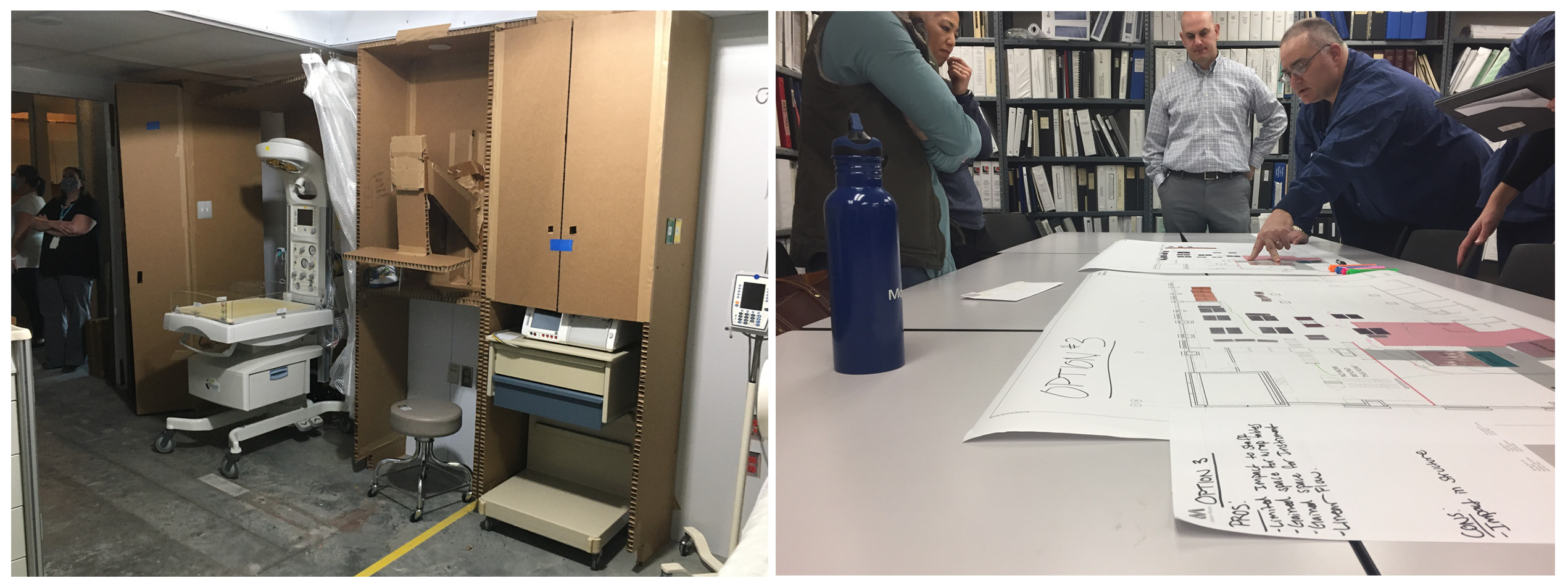
Full scale cardboard mockup; Tabletop exercise
Q: What are some memorable experiences you’ve had during a SPAKL project?
A: Some of our most memorable projects are also the ones the facility might prefer that we not discuss. And client confidentiality is vital. However, the best thing about SPAKL projects is the variety of work. Every project is unique and has its own set of challenges. It’s one of the things we like best about the work…every week is a new adventure.
One week you may be working on an infant security project and a PET/CT replacement project, the next week you might be working on a central sterile renovation and a sink replacement project. Every project we work on builds a bigger picture of the facility and helps the next project be more efficient.
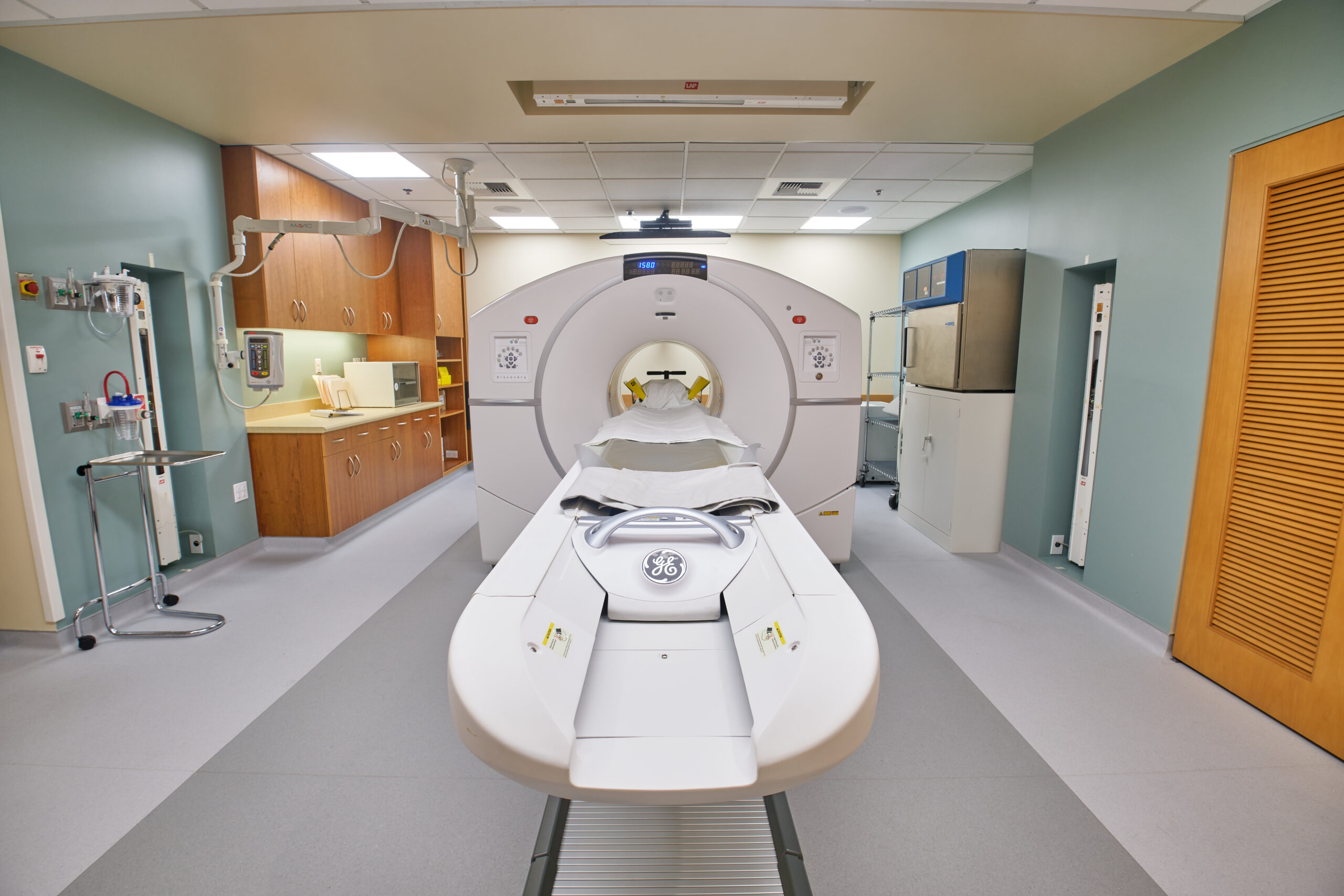 PET/CT room
PET/CT room
The collaboration that the SPAKL team has with clients is unique and illustrative of the solution-focused approach they are becoming known for. Listening, cultivating deep understanding, and involving the client with the hands-on problem-solving all inform this team’s success, not only on these specialized projects, but with the growing number of clients that return to work with AM for further Healthcare facility updates. Observably, Kimberleigh brings energy and inspiration to the SPAKL team, and has forged a path of thorough discernment of what makes a Healthcare facility project complex and important for the community it serves.

Kimberleigh Grimm, Associate Principal
How Architects are using Artificial Intelligence in the Design Process
Revolutions in digital tools and technology are rapidly changing the landscape of many different industries across the globe. One of the latest innovations in digital technology is the widespread use of Artificial Intelligence, or AI. Two Ankrom Moisan architects, Michael Great and Ramin Rezvani – Director of Design Strategy and Senior Project Designer, respectively – have recently begun to incorporate AI software into their design process, receiving encouraging results.
Before the advent of Artificial Intelligence software, precedent images sourced from Pinterest or similar could be used to establish the initial aesthetic direction of a project. Because not every feature of an image would be relevant for a certain project, these images were often cropped and/or collaged together, leading to unnecessary confusion if clients became attached to specific features in precedent images that were never intended to be a part of the final design. AI-generated images have the potential to circumvent that issue, providing inspiration imagery that is specific to a particular place, project, client and design.
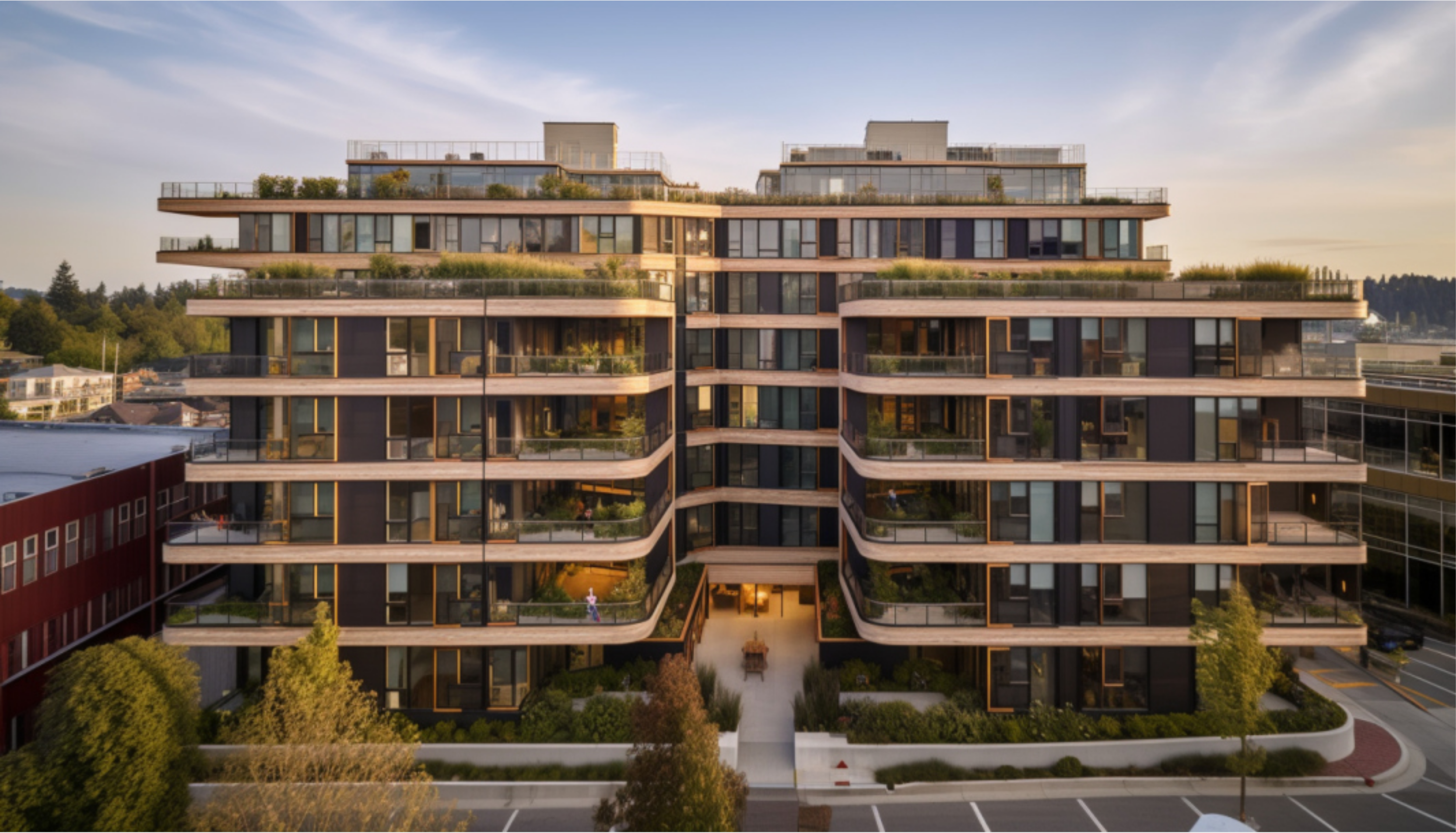
Example of an AI-generated precedent image.
Recently, Michael and Ramin have been using AI to create precedent imagery for their projects. In their experience, renderings created by AI software such as Midjourney assist in streamlining the design process and ensuring that clients are on the same page as designers when it comes to project design and direction.
For many, Artificial Intelligence still represents an enigmatic, complicated technology of the future, reserved for the plots of science fiction movies. However, recent developments in technology have made AI and its uses more widespread and accessible than ever. To explain how AI can be utilized to generate unique outcomes and facilitate a cohesive design language for a project, Michael and Ramin sat down to answer some questions about how Midjourney is integrated into the projects they work on and to dispel common misconceptions about the technology.

Michael and Ramin together in the Portland office.
Q: When did you begin incorporating AI into your approach to project design? Why was this something you decided to do?
Michael:
Our adoption of AI software has aligned with the technology’s continual improvement. Initially when we started experimenting with architectural imagery, it was giving us broad stroke building concept imagery. These were by no means a “design” but it got Ramin and I thinking, ‘Oh, this technology might be evolving to a place where we could utilize it more in the design process, let’s trial this a bit and see what we can get out of it.’
Part of my interest there is that historically architects have used precedent imagery to describe things that don’t exist yet, or to get clients aligned to what the design intent might be? Language doesn’t often get us to a full understanding. So, I think architects have always used imagery, whether that’s precedent imagery or rough sketches to just get alignment about the direction of a project aesthetically. Both Ramin and I have always thought it was strange that in this process you are often using existing buildings to convey new ideas. I think the advantage of using Midjourney and AI is that we can accomplish the same general task of conceptual alignment but show clients unique imagery that is specific to their project, place and aesthetic.
Ramin:
We just started playing around with Midjourney when it came out. It was really exciting and interesting, and we had no idea what it was, or what it could do, or how powerful it was the first couple of times we were testing it out. Then we tried to make it do something specific, and that’s where it started getting fascinating, because it’s potentially a huge shortcut for certain things- especially with generating concept imagery.
We kind of hit a wall with a project where we wanted to be able to quickly visually convey something that didn’t exist. We had some loose ideas influenced by some projects that only exist at a completely different scale than what we were looking at. We thought ‘let’s see if we can figure out how to combine all of these ideas and generate imagery to illustrate to the client where we are going with this.’ Through that process, getting imagery close to what we were trying to do was mind-blowing.
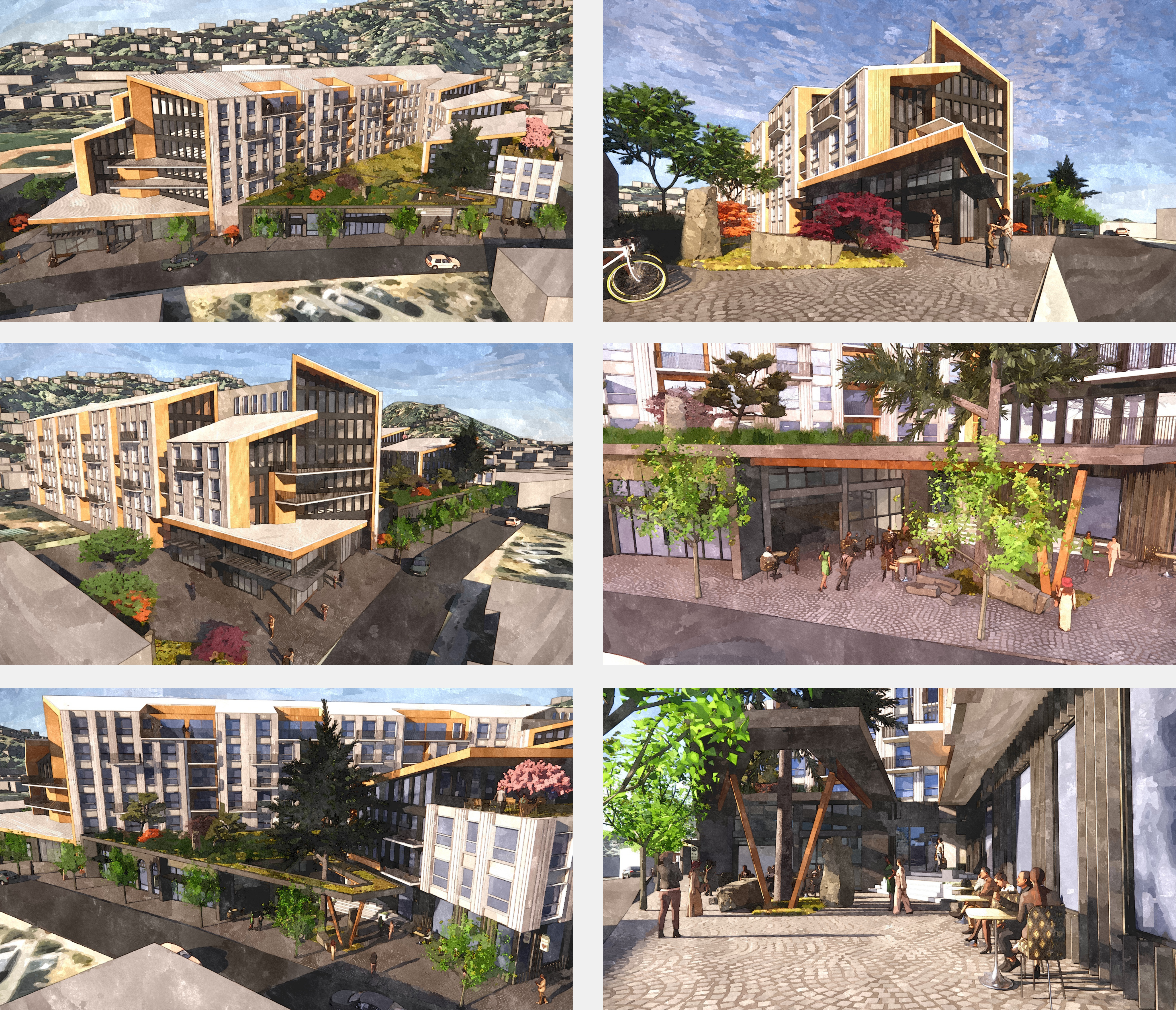
Final project design renders created by Michael and Ramin that were influenced by AI imagery.
Q: Ramin, you’ve said that AI is “like a paintbrush or any creative tool, you just need to figure out how to use it,” and Michael, that “it’s a language. You have to learn it, just like any software.” How did you both go about learning to use these tools, and how long did it take you to learn the language, so-to-speak?
Michael:
I don’t know how far we actually are on that journey, and I think we have a long way to go. There are a ton of resources out there, though, in terms of helping you learn the language through prompt editing. But this is moving so fast that there is now software that will do your prompts for you. You can just add in a few descriptive words, and it’ll fill in the rest, writing it in the way that the AI software wants to see it. Every time you use it, the more you use it, you learn something about what the output is. The more trial and error you go through, the faster you get at getting to an image you can use.
You have to think differently about the words you are using to get the imagery desired. It’s a shift in how you think since you have to use fewer words to get your idea across. You must be specific and pointed while still giving the software enough information. From that standpoint, I feel like the faster you can get your mind into that mode of thinking, the better off you will be as AI continues to develop, because the premise of utilizing language to direct output will only accelerate from here.
What we all have to adapt to and learn is how to use language to describe what we want machines to do. But even that is probably a couple years from being obsolete. There seems to be an updated version of Midjourney every month that’s substantially better than the last. Even since we last talked, they’ve come out with reverse-prompt capability. So instead of putting a text prompt and getting an image, you can do the opposite, dropping in an image and getting a prompt. By doing so you can start to understand the language in reverse because you’re dropping in an image and the AI is telling you what it sees in text.
Ramin:
I’ve been using it a lot, trying to figure out how to create very specific imagery. Like Michael said, it’s a lot of trial and error. To be able to get usable images, it has definitely required a shift in the way that I think due to the way that the prompts work. I’ve been approaching it almost like a science experiment, changing the prompts slightly with each iteration to see what I get back visually with each update. But also, it’s not like you can master it because it’s changing so rapidly. The next versions will likely have a completely different interface, so the way that you write prompts will likely change too.
Q: Can you walk me through the typical steps of using Midjourney to create precedent imagery?
Michael:
The process right now that we’ve been utilizing is that we’re trying to plug it in to an existing process. On a lot of our projects, we start by charette-ing and brainstorming, trying to develop a cohesive concept. AI software like Midjourney increases the speed at which we can reach solutions, because we’re not all going in different design directions.
What we’ve tried to do initially is take the guiding design principles for a project and feed those words into the AI to see what kind of visual representation it would create with our initial thoughts. So again, trying to accelerate the process a bit and get to visuals through words that we’ve already talked about or discussed to create alignment on design direction. As the technology evolves, there will be other ways for us to utilize it, maybe in final renderings, for instance. But right now, I think coming up with precedent imagery is the best use of it.
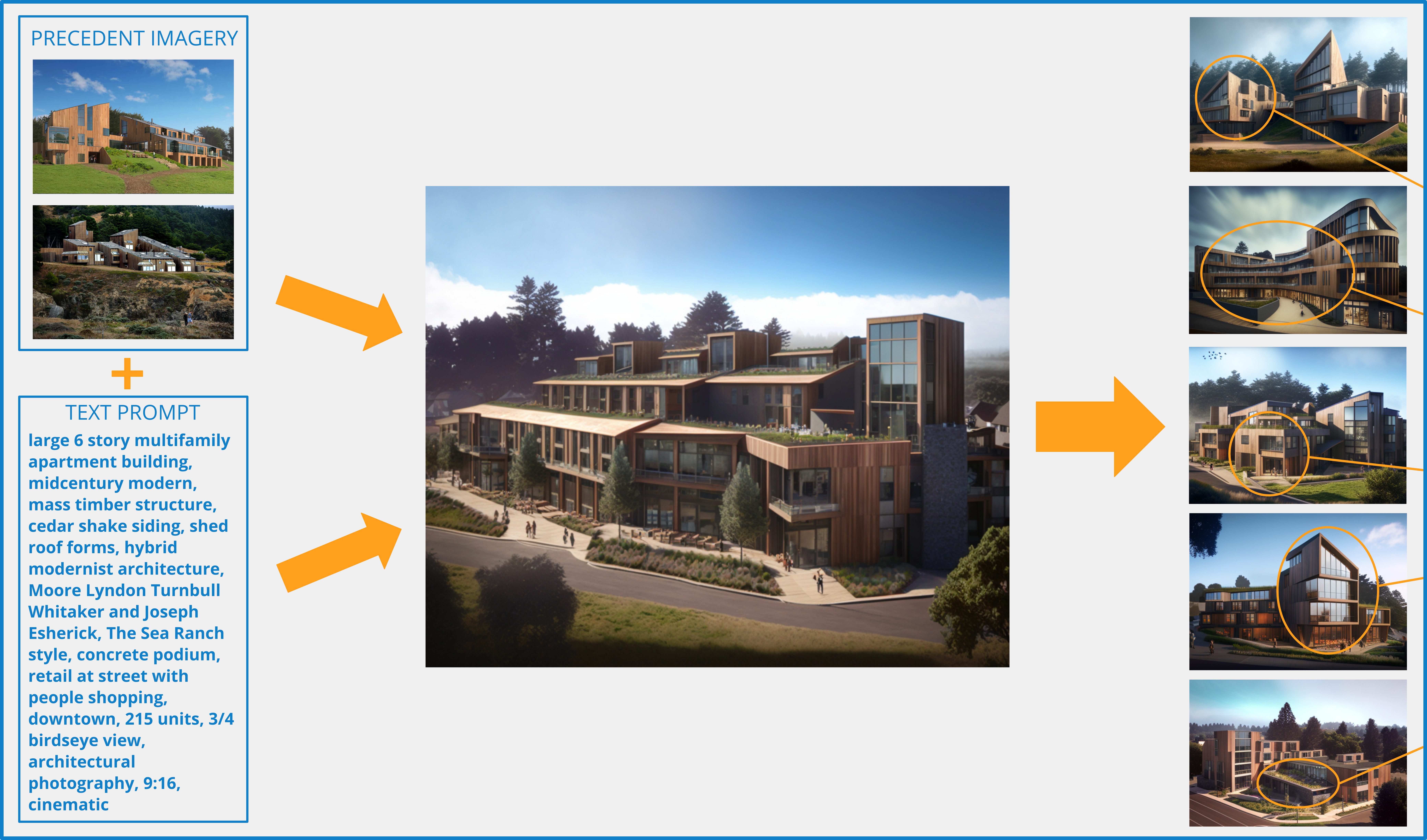
Visual breakdown of how guiding design principles and text prompts are used to generate new precedent imagery renderings with AI software.
Q: [You’ve] said that clients often don’t know what to make of design renderings when they learn that they were created by AI. What are some common misconceptions or misunderstandings about Artificial Intelligence that you’ve encountered since you began using it?
Michael:
The most common misconception that Ramin and I have run into is that the AI-created images are just precedent imagery pulled from the internet. You have to explain that it’s not a search engine, it’s not finding an existing image on the web. Often, I have to describe what it does in shorthand for people to understand it.
Ramin:
One of the things I noticed right away was people asking ‘doesn’t this take the creative process out of architecture now that you have this image designed by AI?’ At least for the time being, I don’t feel that way. As a design team, you still have to generate the foundational ideas and coax the AI to output something that aligns with your goals and vision. It’s a quick way to get the team on the same page and discover interesting emergent qualities from concept intersections that you may not have discovered on your own. In our current workflow AI produced visuals are intended to draw from and quickly study a whole bunch of different ideas to curate the most interesting aspects of each, based on what we asked the software to do.
Q: Do you have any fears surrounding the use of AI or the rate at which it is evolving, a la Terminator’s Skynet?
Michael:
Like any new technology, it absolutely has the ability to be used in various ways. I mean, there’s no way around that. I think there’s many applications of AI that could be negative, primarily in terms of its ability to manipulate people. But in terms of what we do, there’s not much risk if you understand it’s just one tool out of many that we can use. It’s not like Midjourney will actually produce architecture. It produces ideas that a designer still has to understand, edit, and synthesize into a project’s end design.
Ramin:
It’s hard to tell right now what is going to change and how much it will change. I’m definitely concerned about it, not just for the field of architecture, but for humans. In general, I feel like no technology has advanced this quickly before and it will continue to accelerate. There are just so many unknowns but I’m sure we will quickly see AI implementation in daily life. I think that we’ll know a lot more in the next five years or so.
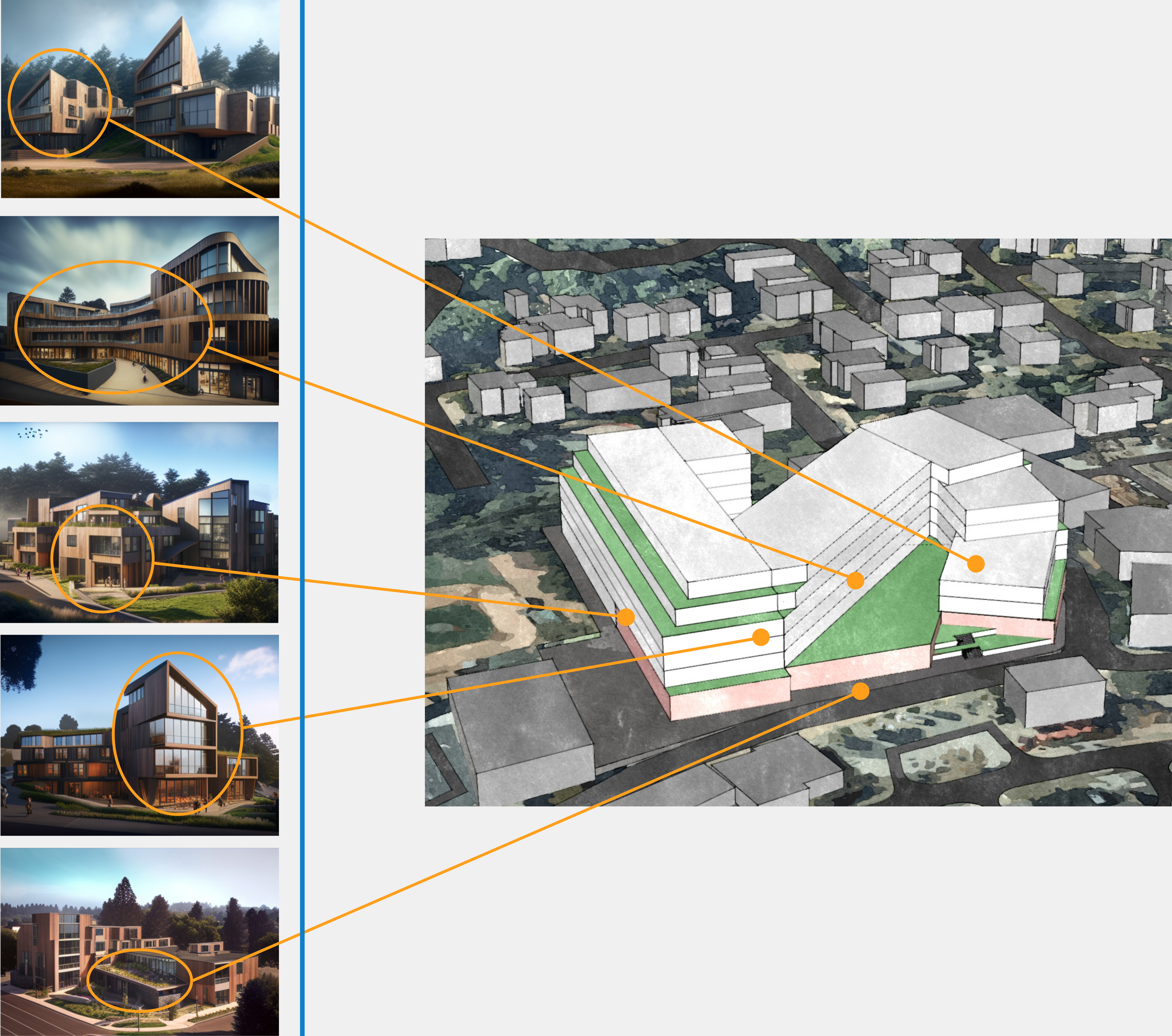
AI process design results, highlighting the Midjourney-generated concept renderings that Michael and Ramin synthesized and incorporated into the initial massing render for a project.
Q: With the rapid speed at which AI changes and evolves, how do you envision the future of AI as it relates to architecture? What about the future of architecture as it relates to AI?
Michael:
I think that AI continues a theme that has remained consistent throughout the last 100 years in terms of how architecture utilizes technology. Usually, it’s used to speed up the design process. One thing about architecture that’s so different from a lot of other professions is that it still relies on artistry, but there’s always a ‘hurry-up’ type of attitude, we are often pushed to develop designs and drawings faster and faster because of project economics. So, we’re always looking for tools to speed up the process. In addition, architecture is a broad profession. There are people doing wildly different things in the profession their whole career, and I think that could get streamlined.
Outside of Midjourney, there’s a whole slew of AI implementations using other design and construction software that’s meant to speed up how fast we can produce a construction set with fewer people. I think inevitably, that’s where architecture has always gone. 100 years ago, it took 40 people in a room, drawing a set for a high-rise tower by hand. I think in the future, a 40-story tower can probably be designed and drawn by two people. Eventually, the industry will get to a point where one or two people can accomplish that same task in half the time it takes now.
I would say that right now, as designers, we are not spending enough time understanding the place, the people using the building, and the environment surrounding a project. We’re rushing through a lot of those elements to get projects built, so I think where you end up by incorporating AI into that process is more thoughtful buildings, because we don’t have to spend as much time crossing the T’s and dotting the I’s. We can actually think about the project and the building rather than drawing it, and to me, that’s pretty exciting. Architecture can’t do anything but get better through this process. I don’t think anything gets worse. It just gets better.
Ramin:
In my mind, there’s no doubt that any areas of inefficiency in the architectural process right now, some of which will be resolved using AI. It’s going to accelerate and amplify the amount that an individual can do by themselves, so I think it’ll take fewer people to do the same amount of work.
I think it will allow us to study way more aspects of a project quickly and, like Michael said, make projects significantly better by understanding more of the site’s parameters. It feels like an amplification to me now, but who knows what will happen in six months?
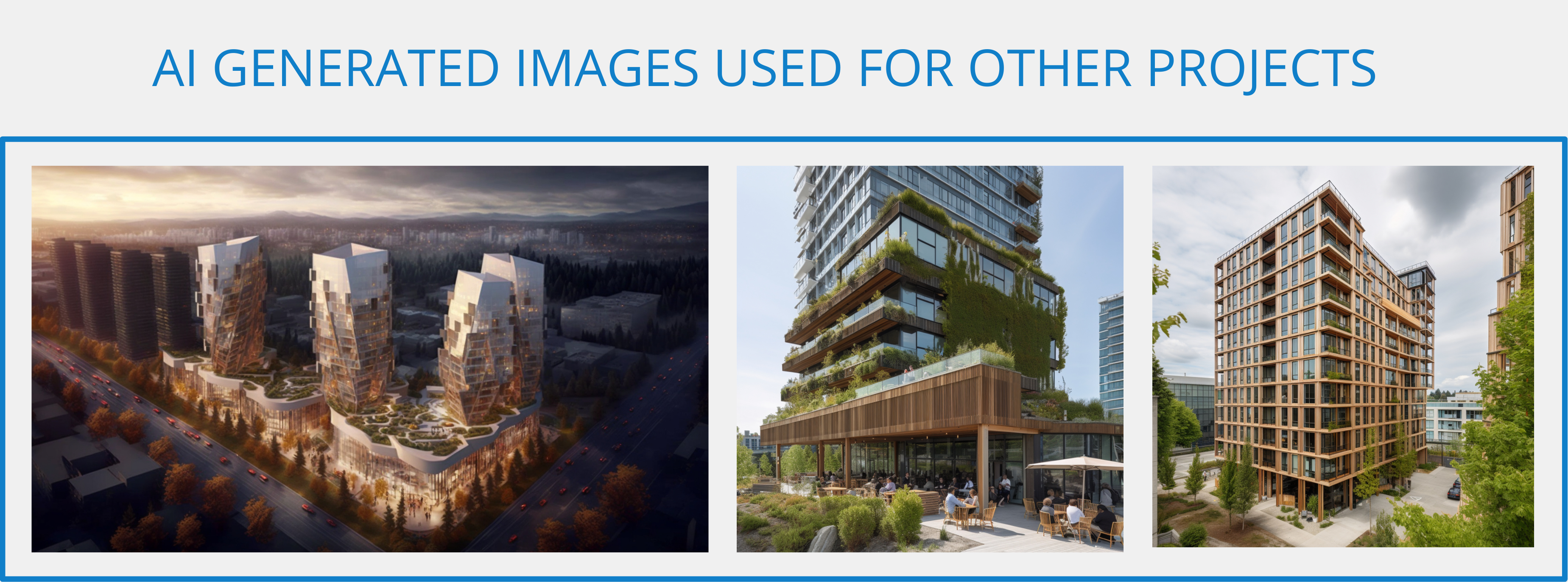
AI-rendered precedent imagery from other projects.
Compared to other Pacific Northwest architecture firms, Ankrom Moisan is a pacesetter in terms of integrating Artificial Intelligence and other digital tools. Few competitors use AI, if at all. International firms, though, tend to use AI software for design-based research. However you cut it, the digital tools of imagined sci-fi futures are closer than it seems, and may, in fact, already be here. It’s a massive paradigm shift that will take some time to get used to, but the good news is that when the AI overlords take over, we will already know how to deal with them.
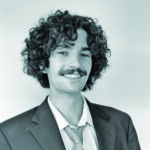
By Jack Cochran, Marketing Coordinator
Dignified Healing Spaces
Does design have the power to enhance dignity?
Many of us have the privilege to go about our daily lives unaware of the powerful role the built environment plays in supporting our feeling of being celebrated and respected. As architects and designers, we must place inhabitants’ dignity at the forefront of our design priorities. Our work has the power to create spaces that have far reaching and lasting impacts. Few places need this perspective more than spaces that serve predominantly underserved, underrepresented, or socially stigmatized communities.
To start, what is dignity?
Dignity is the right of a person to be treated ethically as well as being valued and respected for who they are. For healthcare professionals dignified care means recognizing and honoring patients’ capacities and ambitions. While patient dignity is a core tenant of healthcare staff training, it is also critically important to consider the role of the built environment to support dignity for both patients and staff.
Dignity can be defined by four main factors:
- Respect – Respect includes self-respect, respect for others, respect for peoples’ privacy, and confidentiality.
- Autonomy – Autonomy includes having choices, being able to make decisions, rights, needs, and independence.
- Empowerment – Empowerment includes feelings of being important and valuable, self-esteem or self-worth, and pride.
- Communication – Communication includes clear information, language, intuitive wayfinding and directional cues, and privacy.
Here are five considerations for designing dignified environments:
Design as a Beacon
Too often, mental health and treatment program facilities exist in hidden spaces kept out of sight from the public. We aim to create spaces which bring a sense of pride to those who enter. By considering each step of the end-user experience, from the street approach to the quality of finishes, we aim to thoughtfully apply design aesthetics to create a welcoming facility from the very earliest interactions. Welcoming patients, clinicians, and the community into a space that is beautifully designed to support the specific needs and identity of the users is a meaningful way to communicate the intrinsic value of the patients and clients within those spaces.
In initial design discussions, Compass Health requested a sense of grandeur within their new facility located in Everett, Washington. After years of making do with an aging building, the goal for their Phase II building, housing both inpatient and outpatient behavioral healthcare, was to create a space that anyone would feel proud to enter. The stigma of mental health treatment was stripped away by prioritizing a grand, double-height entry and foyer that highlights exterior garden space. The exterior finishes were selected to be warm and welcoming.
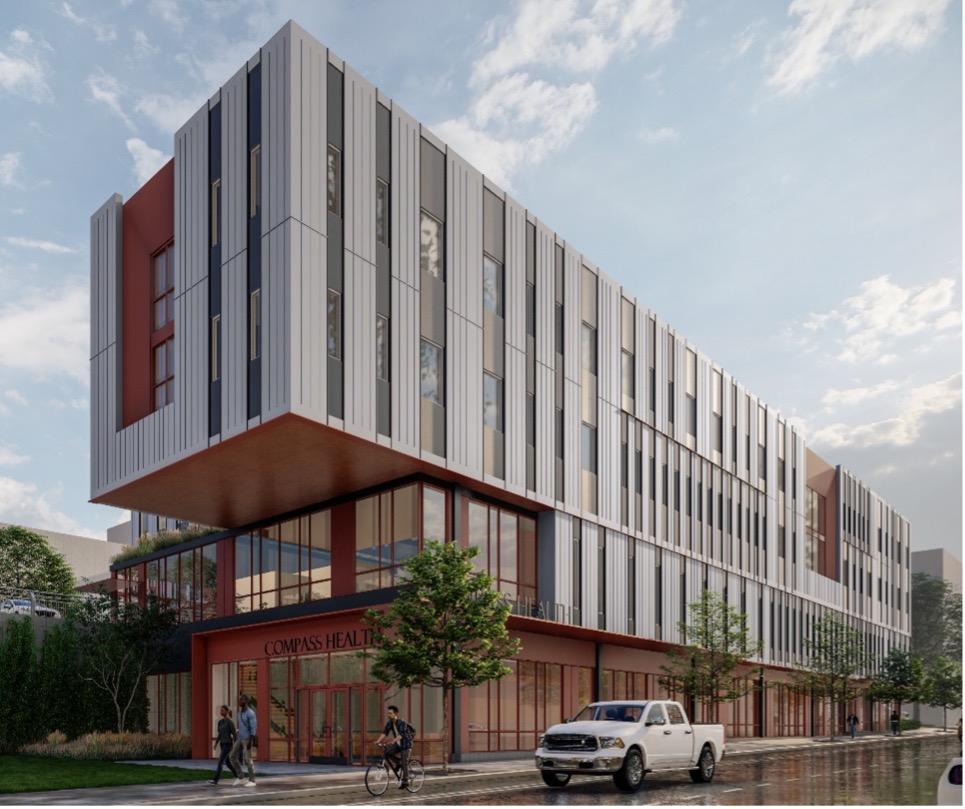
Compass Health’s Phase II: The entry design uses scale, richly colored materials, and nature to evoke a warm welcome to all who enter.
The Power of Choice
In design, when we do not acknowledge the vast spectrum of human needs, we strip away the ability to exercise autonomy and control over our surroundings. Design that is mindful of autonomy, considers a variety of mental states, capabilities, traumas, and preferences to create dynamic spaces which allow people to choose the experience that fits their needs best in that moment. Avoiding the stress of being in an uncomfortable space allows patients and clients to receive care while in the best possible mindset. It also reduces negative associations that may become barriers for seeking care in the future. In many cases, mental health, housing, or medical facilities unintentionally strip away the opportunities for personal choice due to logistics and procedures, but thoughtful communication with providers allows designers to construct opportunities for choice and autonomy within even the highest acuity patient types.
The design team on the Alameda Senior Respite and Primary Care Facility acknowledged the importance of choice and autonomy in the design of the new 30,000 sq. ft. facility serving Alameda County in California. The design, which creates permanent supportive housing for an aging subset of the local homeless population, thoughtfully addresses the need for individual choice by completely rethinking the approach to lighting design throughout the building. Acknowledging the impact of harsh or bright lighting, uncomfortable lighting when resting, or a lack of lighting when trying to read and relax, the design team prioritized indirect lighting throughout all patient spaces, designed hallways outside of bedrooms to dim to the lowest levels allowed by code during quiet hours, and coordinated a wall sconce with controls at each bedside for residents. These simple, yet impactful, solutions allow residents to have autonomy over their surroundings in a way many of us would take for granted.
Safety over Security
We deserve to feel safe in our environments, and increasingly, facilities are moving towards providing a friendly face at entry points to help visitors feel welcome in lieu of uniformed security, which can be particularly traumatizing for many populations. Through collaboration with staff and clinicians, we can facilitate safety by designing clear pathways of visibility for observation and engagement that does not feel intrusive. Doing so allows visitors and residents to maintain their sense of independence and autonomy while remaining safe. Intentionally designed spaces which focus on relationship building increase the safety of patients while also increasing the likelihood of positive experiences and returns for subsequent care in the future.
The inpatient floors for Compass Health were laid out around a central nurse station allowing care teams to maintain a direct line of sight to all patient spaces, including the outdoor patient areas. Whereas other facilities require patients to be accompanied by a staff member to outdoor or group spaces, the clear paths of visibility allow patients to move from space to space unaccompanied, fostering independence while ensuring staff are aware of any interactions which may require their attention. Similarly, opportunities for passive observation in outpatient areas allow for easy circulation and a friendly face at various reception desks to assist first-time visitors and clients, as well as to foster connection with staff in various areas throughout the lobbies.
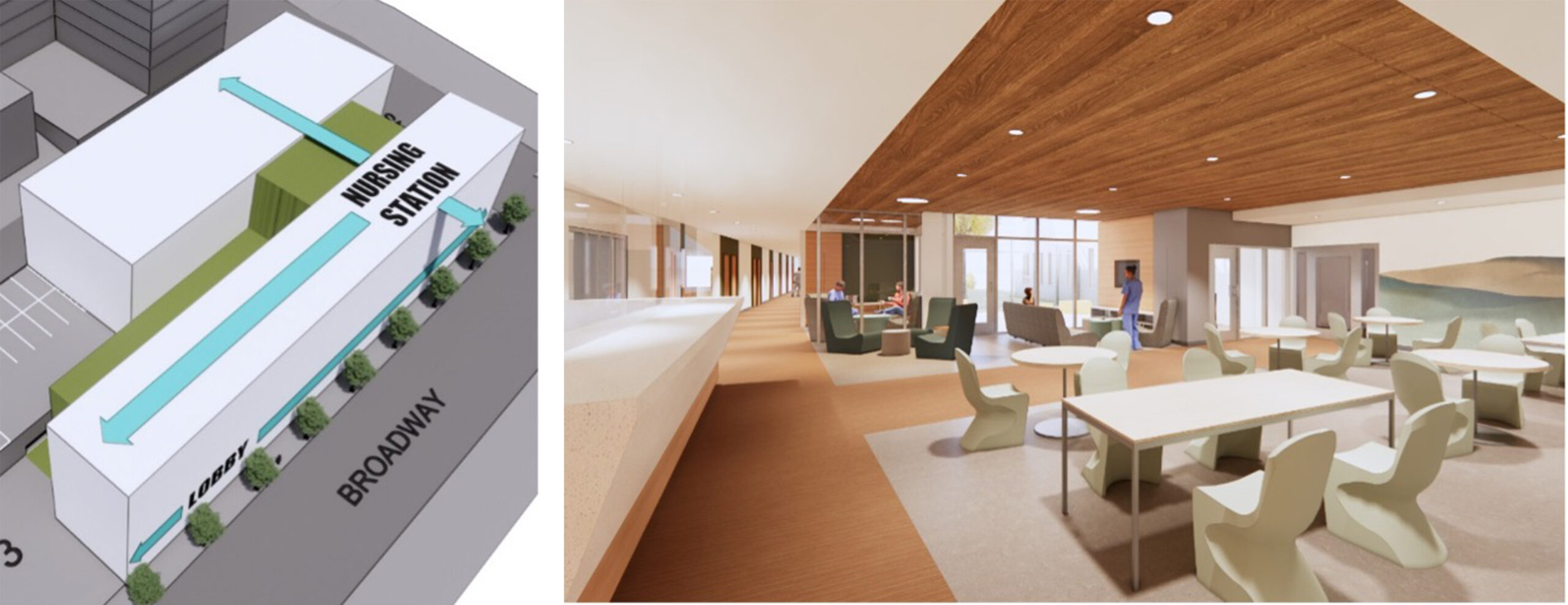
Compass Health Phase II: The building massing prioritized sightlines for the on-unit nursing and care team from the earliest diagrams (left). Interior design focused on maintaining the connection between staff and patients (right).
Whole Person Healing
If we consider the physical, mental, emotional, and social determinates of health in the design and programming process, we can create transformational facilities that help bolster the entire community. By creating space for additional programs and prominently locating basic needs near entries, each visitor can easily access support. Furthermore, designing medical care with counseling and housing opportunities provides a holistic approach to wellness that caters to a vast spectrum of needs, removing the barriers of care that occur when visiting many different facilities for the same services. Integrating community spaces into our designs allows additional social needs to be met that may not be related to specific medical needs, while inviting the community into spaces shared by diverse populations humanizes the experience of those seeking treatment in those spaces.
The core tenant of Central City Concern’s Blackburn Center is to “help people’s health through comfort, community, and safety.” The center, which serves people experiencing homelessness, poverty, and addiction in the Portland, Oregon area also aims to create a supportive housing project which incorporates mental and physical health resources under the same roof. The design carefully integrates a complex series of support systems that begin on the ground floor with commons area, teaching kitchen, pharmacy, and community services. Moving up a floor, the medical clinic supports the housing residents onsite. Housing includes palliative care, two floors of single room occupancy housing, and a floor of apartments for permanent housing, which supports people nearly ready to live on their own. The design aesthetics and function aim to create a fulfilling and enriching home-like experience that bolsters residents in all aspects of health and wellness, truly treating the whole person.
Nature as Medicine
Biophilia states that we, as humans, are part of nature and are inherently attracted to, and supported by, natural environments. Using nature as a tool to promote healing and wellness is a key part of providing users with the respect and dignity they deserve. Many at-risk populations receive care and housing in aging spaces that do not receive quality daylight, and access to outdoors is deemed too unsafe and difficult to monitor. By incorporating nature connections such as views, natural materials, fresh air, and plants into the requirements for healing spaces, we ultimately acknowledge the humanity of the occupants within a space. Whether they are patients, residents, visitors, or staff, everybody benefits from contact with nature through positive distractions, lowered blood pressure, increased resilience to environmental stressors, and the benefit of aligning our sense of time and place with the observable natural rhythms of the world around us.
Early on in Compass Health’s design process, the importance of fresh air and contact with nature was identified by the client and design team. As a result, the earliest building massing schemes explored how to bring nature as far into the building as possible. The resulting form for the inpatient floors is two separate wings positioned beside deeply cut rooftop gardens with a central connection space that serves as the primary gathering and dining area for the inpatient population. Each of the two floors of inpatient treatment have access to dedicated outdoor garden spaces that are designed to allow residents to move freely between interior living spaces and outdoor areas. Beyond the patient outdoor spaces are extensive green roofs which are visible from interior spaces in the public, staff, and patient spaces. This impactful design decision will support the healing and restorative vision of Compass Health’s mission to treat the whole person.
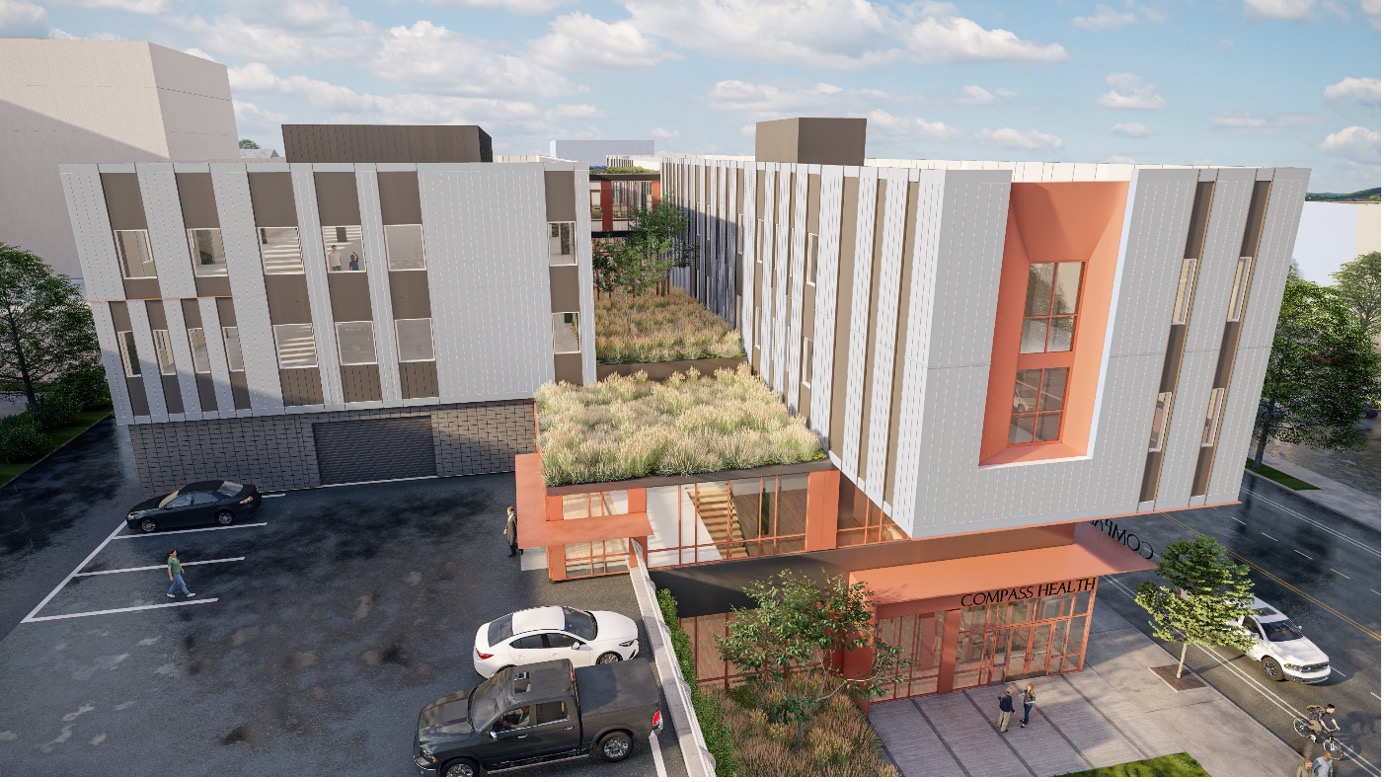
Compass Health Phase II: Both inpatient floors provide residents, staff, and visitors views of nature by utilizing the space between buildings for extensive green roofs.
Why design for dignity?
By implementing these five strategies, designers can create spaces that honor the core aspects of dignity by respecting each visitor and their unique place in the world, supporting their autonomy through choice, empower occupants as they move through the space, and ultimately communicate equitably inhabitants. The resulting designs are spaces which can be as meaningful as they are beautiful while actively participating in the health and growth of our communities.

By Ashlee Washington, Senior Associate
Being Well
While physical health and fitness have been an important aspect of residential design for many years, it’s only in the last 5-10 years that the language – and the thinking – has become more expansive.
Wellness is the new watchword. It’s not just a trend, but rather a powerful approach to residential planning, design, and programming that has the potential not only to improve your residents’ lives, but your bottom line, driving demand and tenant loyalty.
Wellness, approached thoughtfully and executed with purpose, is more than an amenity, it’s a business strategy.
Read on…
Creating Environments to Suit Your Energy
Happy National Fitness Day! Kim Bielak is credited for starting the day in 2017 which is “designated for the first Saturday of May to be a celebration of strength and empowerment for fitness” (Source). Here at Ankrom we design our fitness centers and bike rooms for the end user to feel that same strength and empowerment for fitness. In celebration of National Fitness Day, we want to share Ankrom’s past designed workplace fitness and bike amenity spaces.
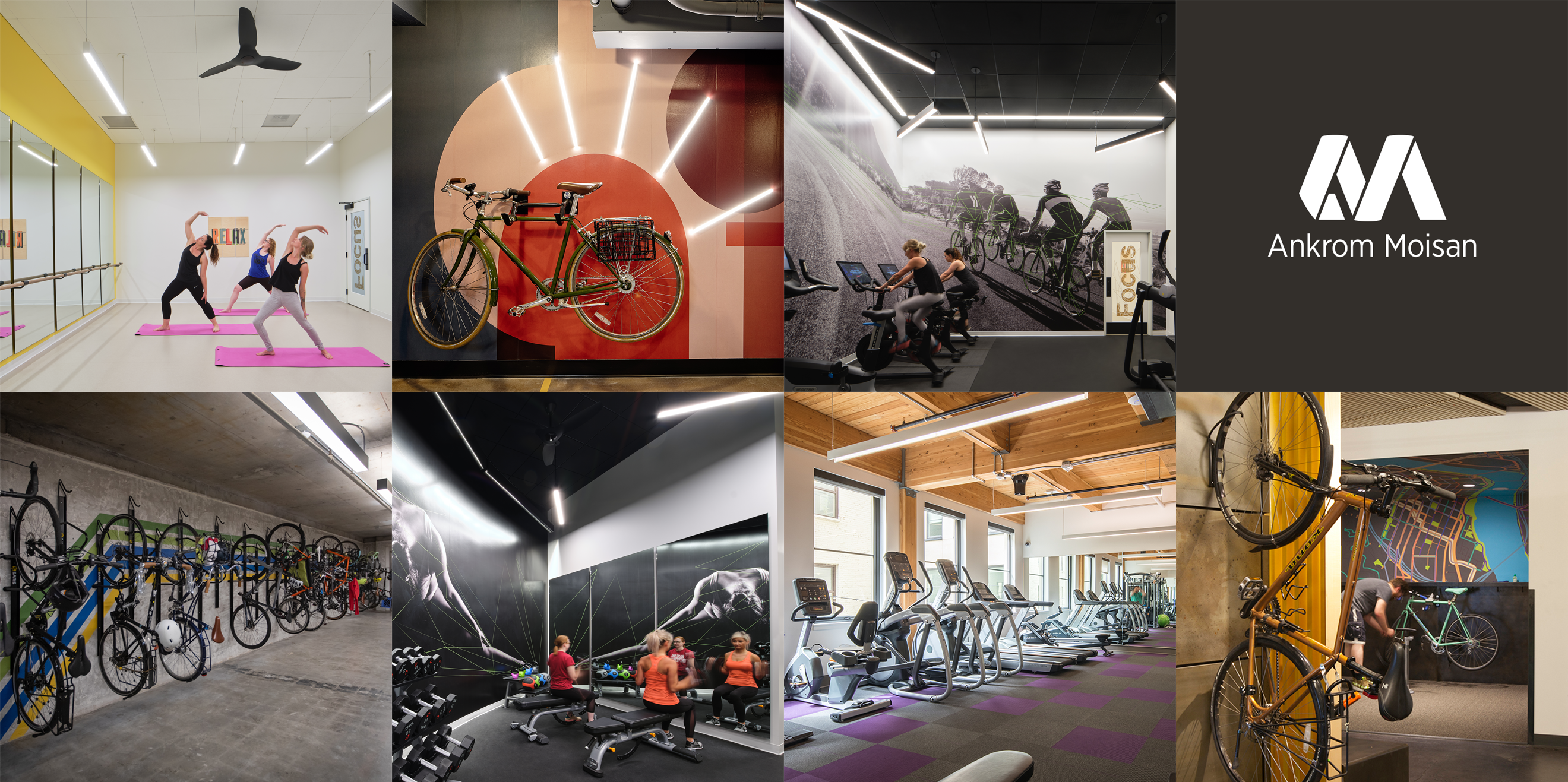
A word from one of our Fitness Resident designers, Clare Goddard.
Q. What is unique about Ankrom’s approach to fitness and bike spaces?
A. How we approach fitness differently is focusing on making it an experience and a destination. Whether that includes coordination of equipment, wall graphics, lighting, we focus on it being an experience of what clients are wanting to have, not just utilitarian, and not a place of dread for the end users.
Bike spaces used to be treated as more of a back of house space with little design to them. Instead, we have been looking at them as a space where we can have fun and even make a bold statement. Having fun with bikes taps into Portland bike culture, why not elevate the space more?
Q. How do you design a space that is inclusive for all abilities and fitness levels?
A. The first thing that it comes down to is universal design: doorknobs, benches, ADA lockers and ADA compliance, etc. Equally, providing a variety of fitness equipment, yoga rooms, treadmills, interactive mirrors, stretching or weight training areas – let the user choose their workout type for a variety of abilities. Variety is key.
A well-designed fitness center should feel welcoming and inviting because so often fitness centers do not feel inclusive, or they are uncomfortable. Everyone should be able to move their body with joy within the space.
For example, in a project I was a part of we took an existing basement space, added brand new lighting, bright colors, added various benches, hooks, upscale lockers and even additional parking for e-bikes and recumbent bikes.
Q. How do you balance aesthetic between open gym v. class environment?
A. Using materials that feel like they go together or are complimentary between spaces. Using lighting that is around the perimeter of mirrors and highlighting what is more important in each space. For example, flooring changes could be LVT in the classroom and anti-microbial carpet tile, rubber or cork flooring in the gym area.
Q. What is your favorite part about designing fitness spaces?
A. My favorite part is that I’m an athletic person, and I enjoy working out. I get to put myself in that mode to imagine how myself or others would use the space. “Getting into the concept” and making it unique from other fitness centers.
Q. Where do you start with fitness planning and programming?
A. The best way to start with a fitness center is to get surveys from building tenants to hear what they want, so that you have information on what the tenants want to use. Understanding the competition and comparing what other buildings are offering also helps to make a fitness center stand out in the crowd. Compare what other buildings in the area are offering.

Contributor: Clare Goddard, Senior Associate Interior Designer

Emily Feicht, Interior Designer

Rebecca Brock, Associate Interior Designer






